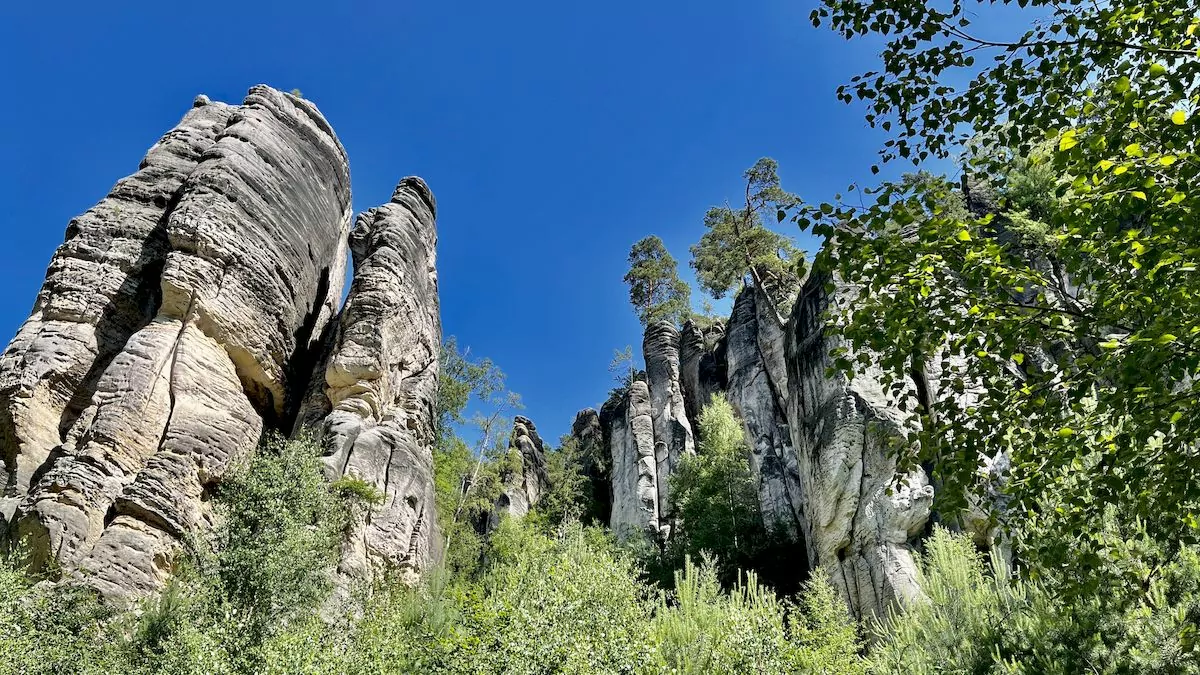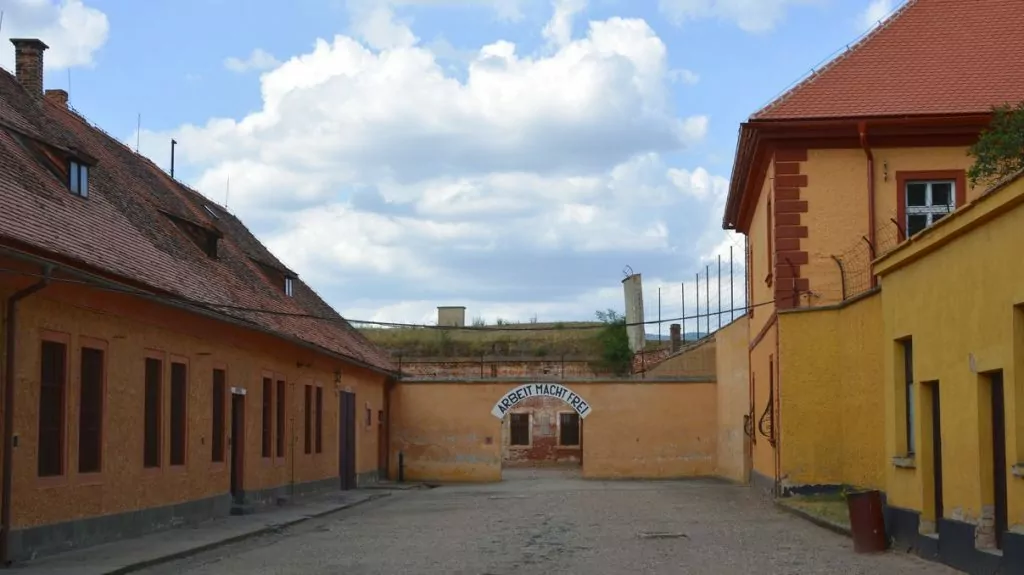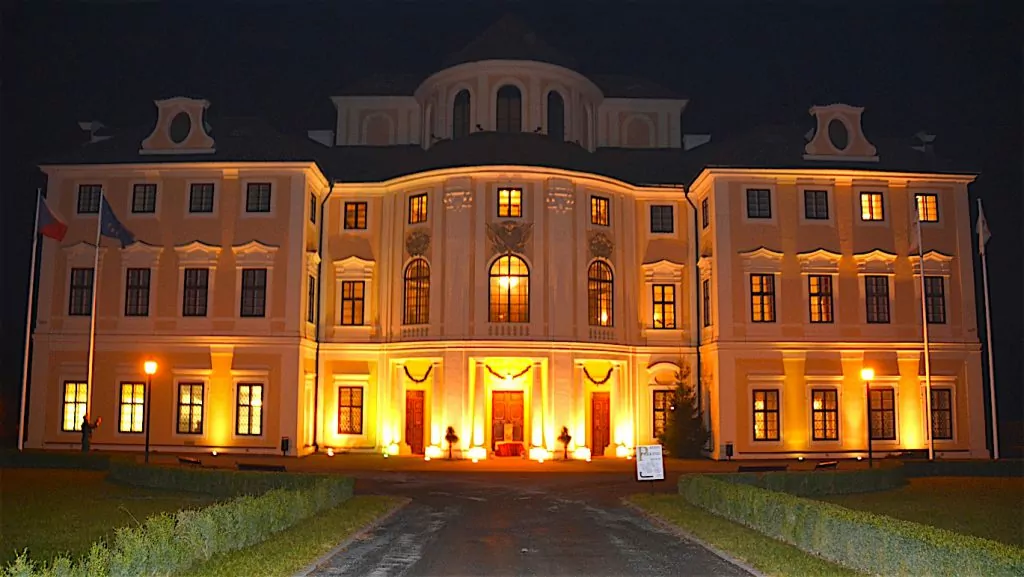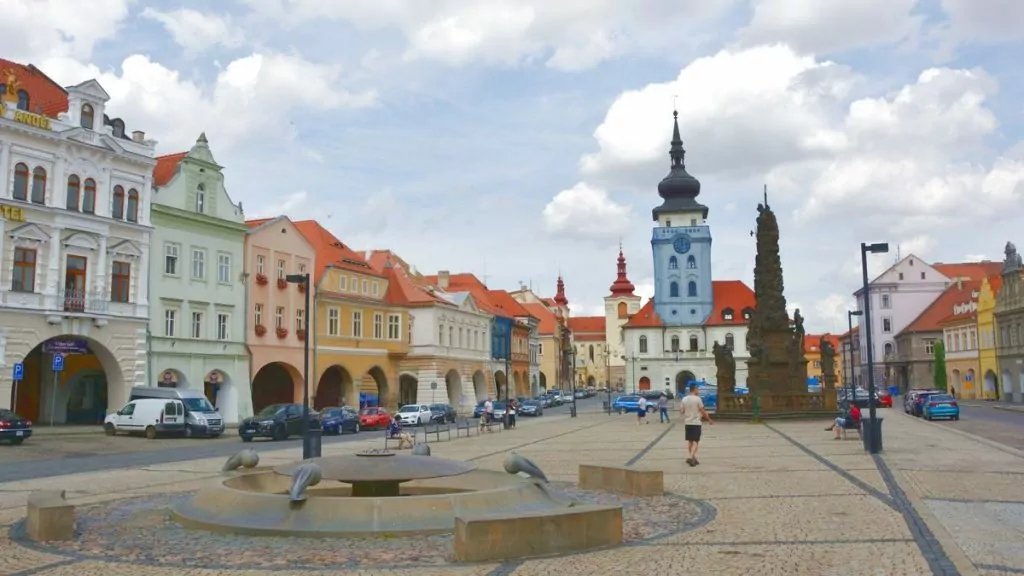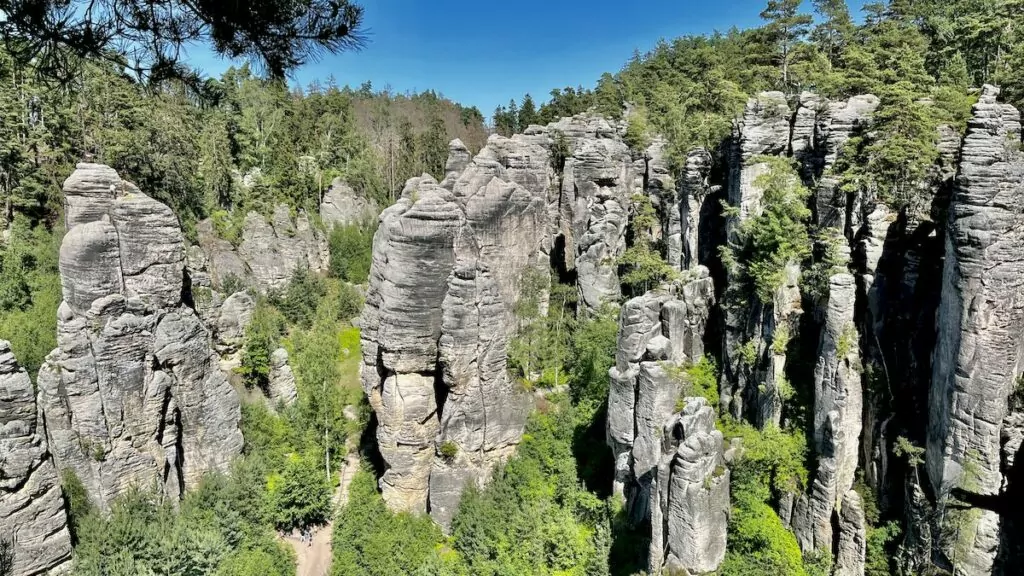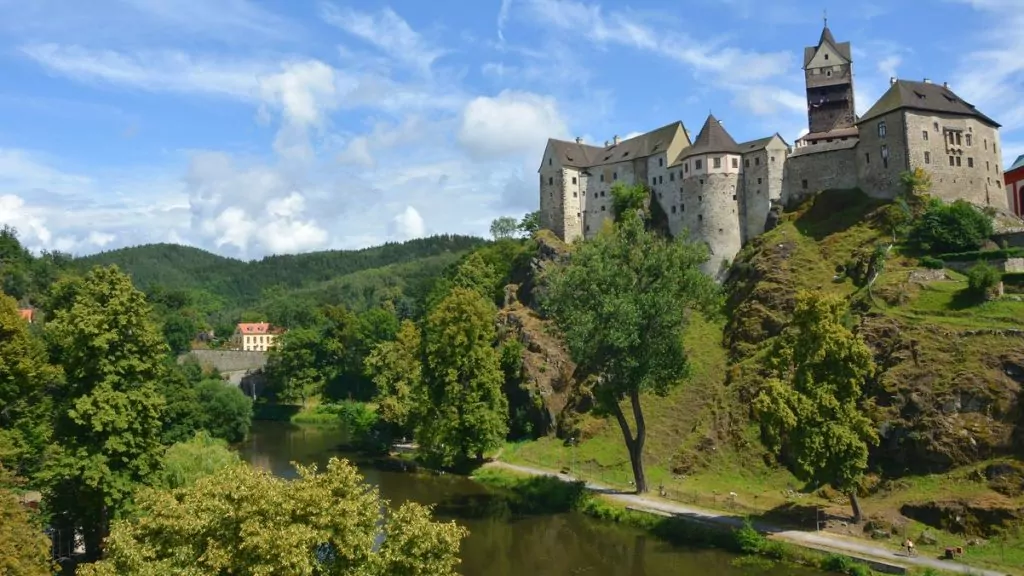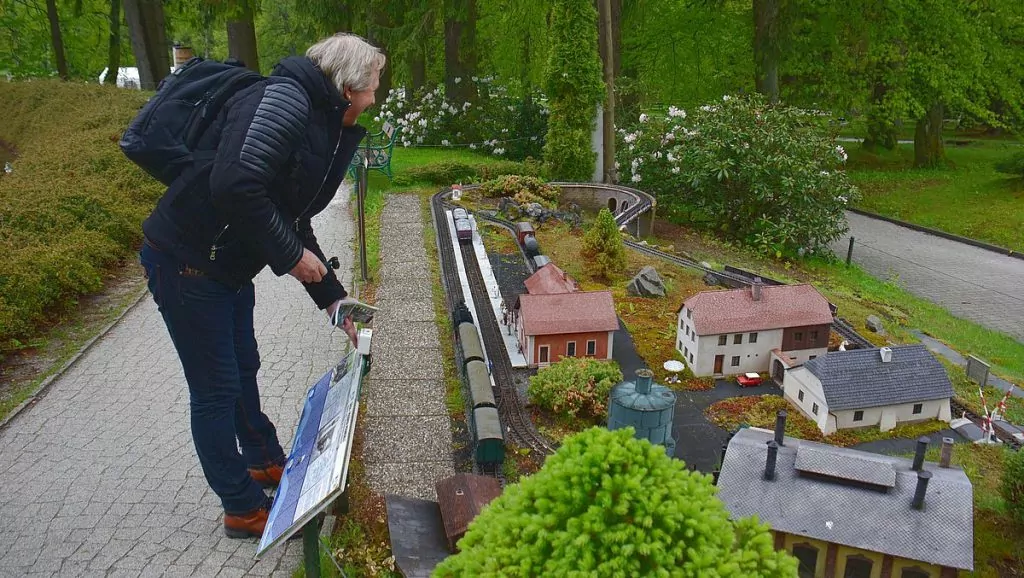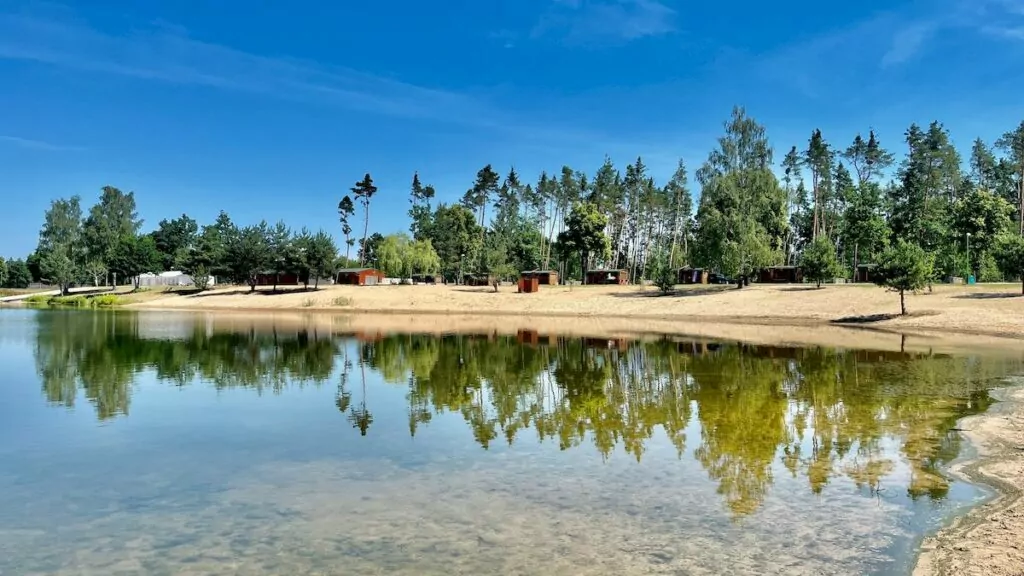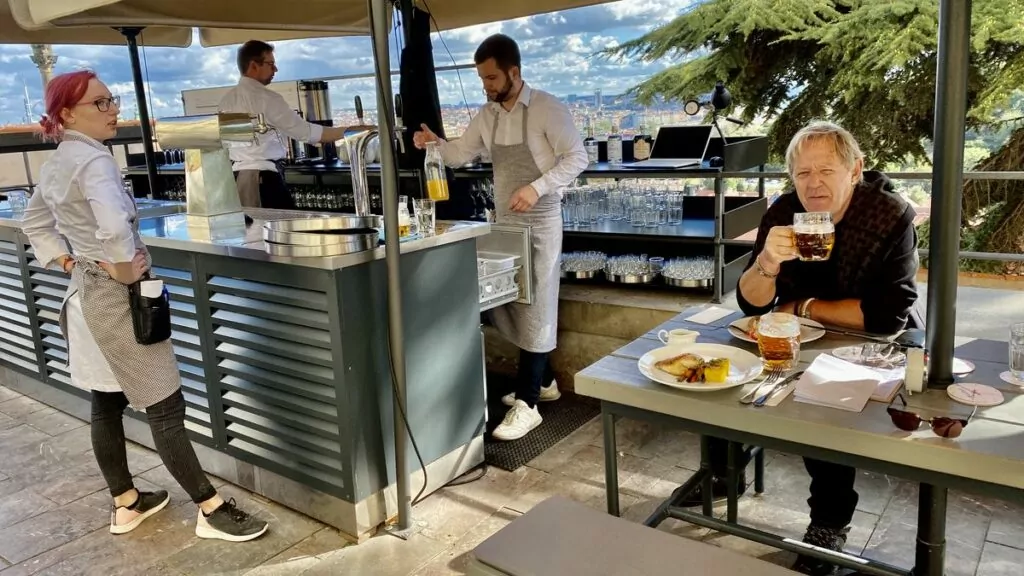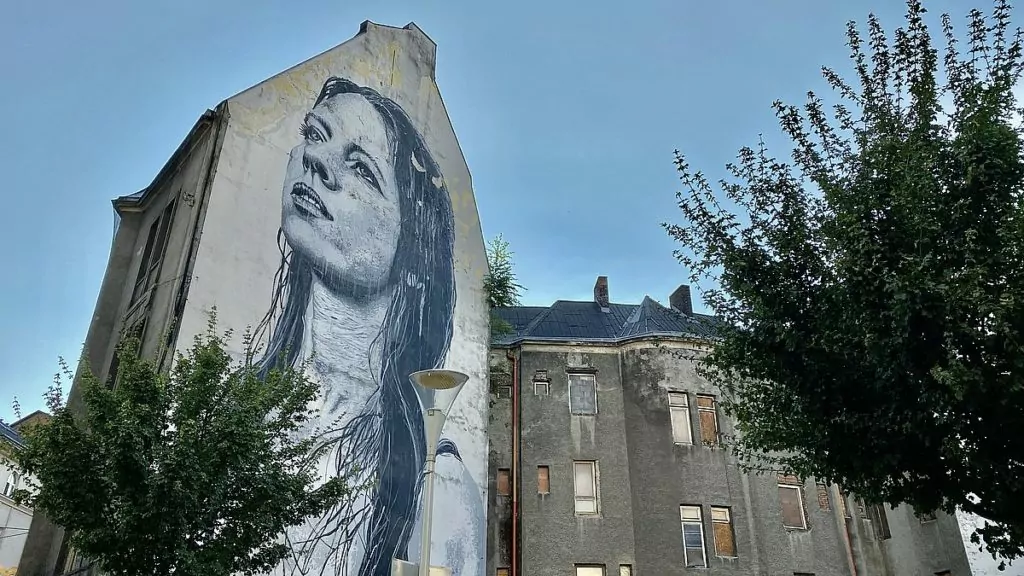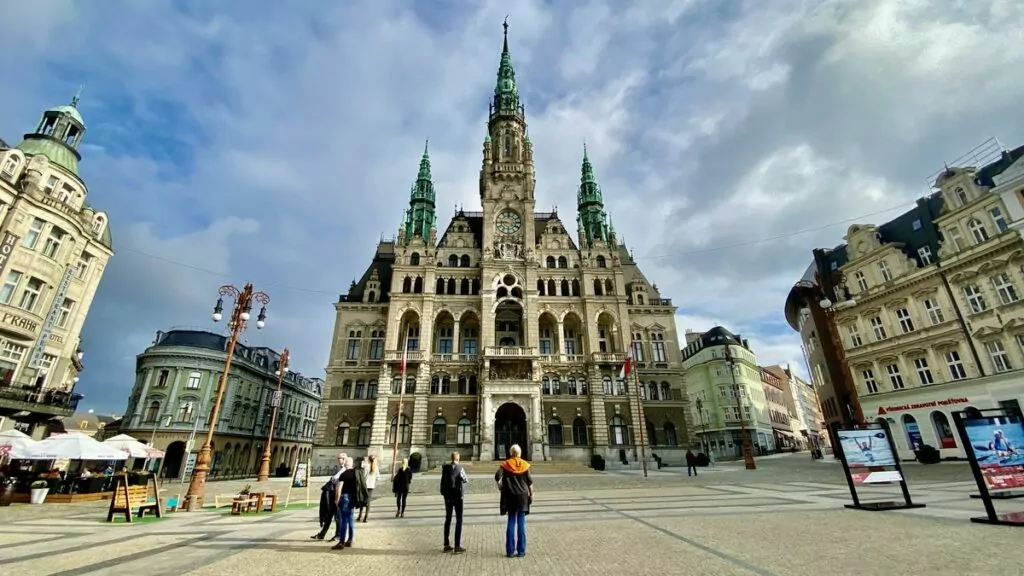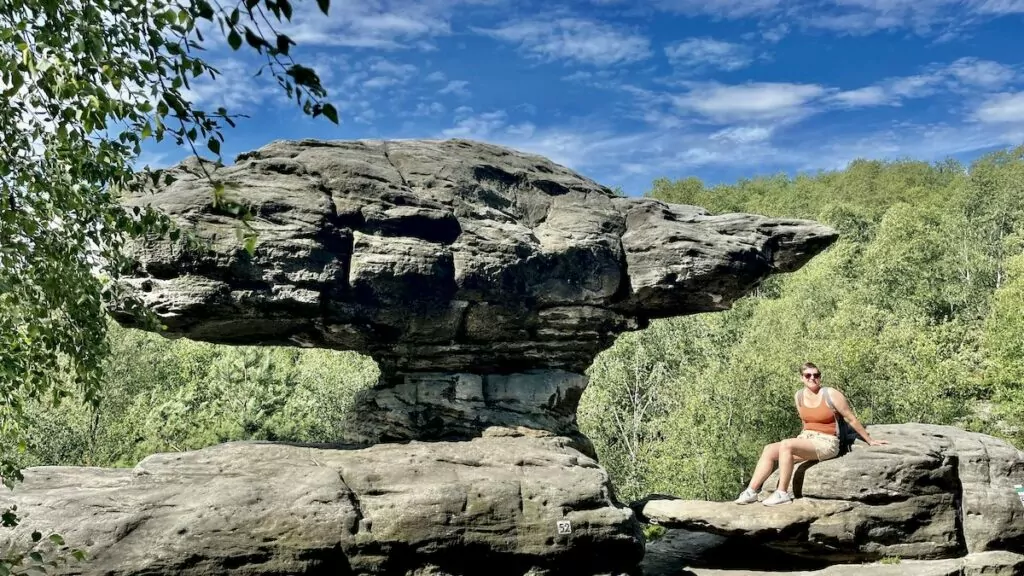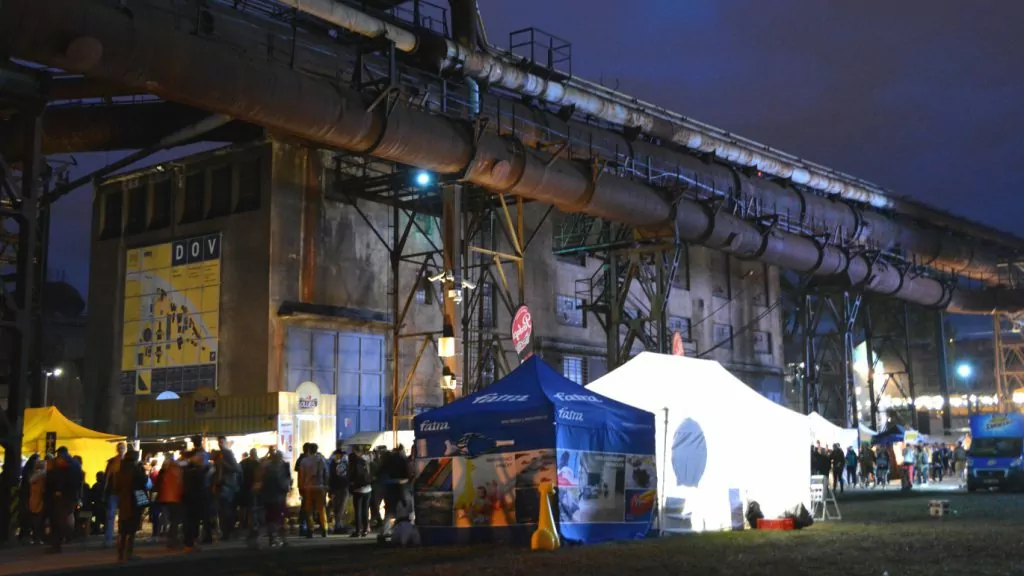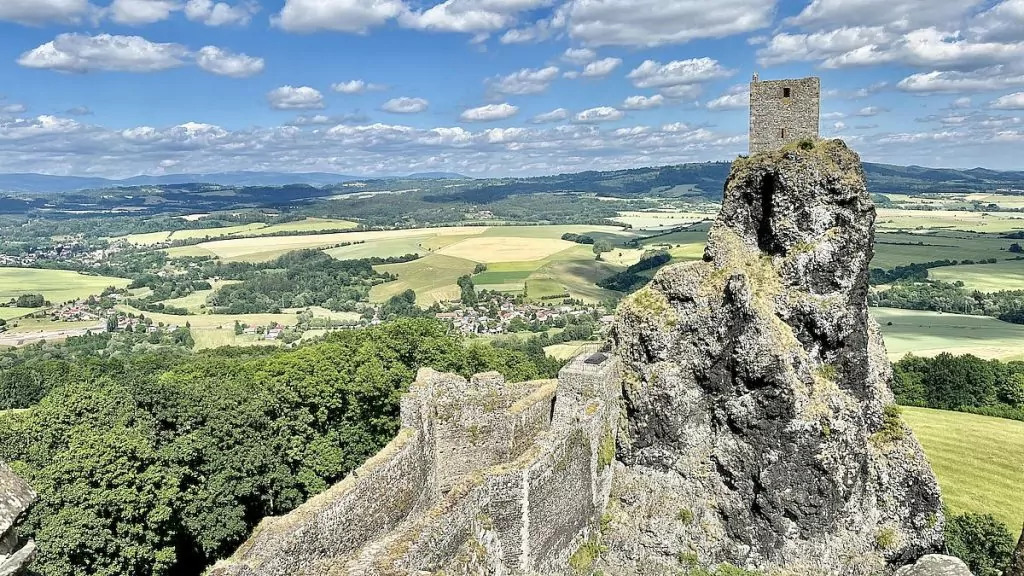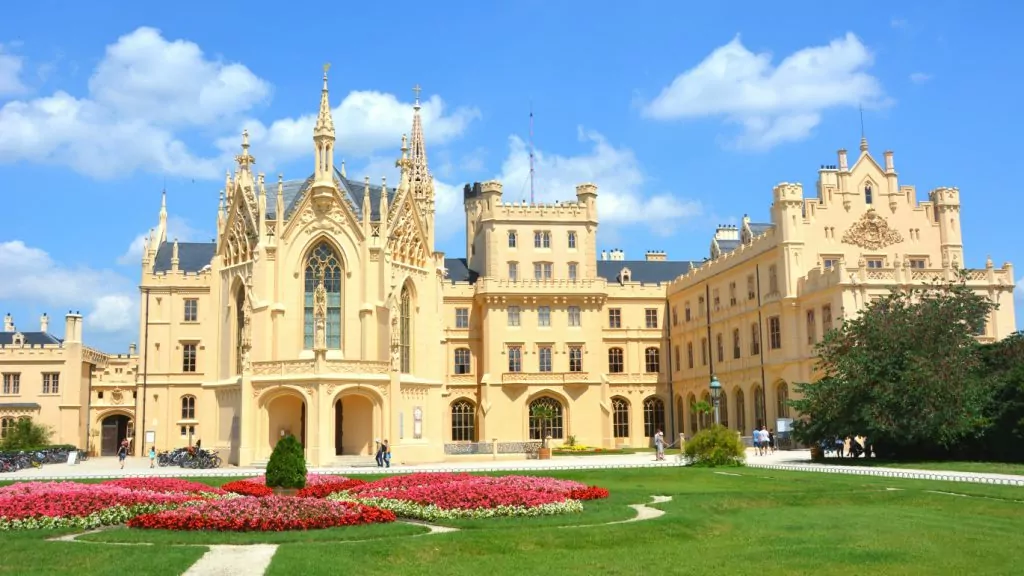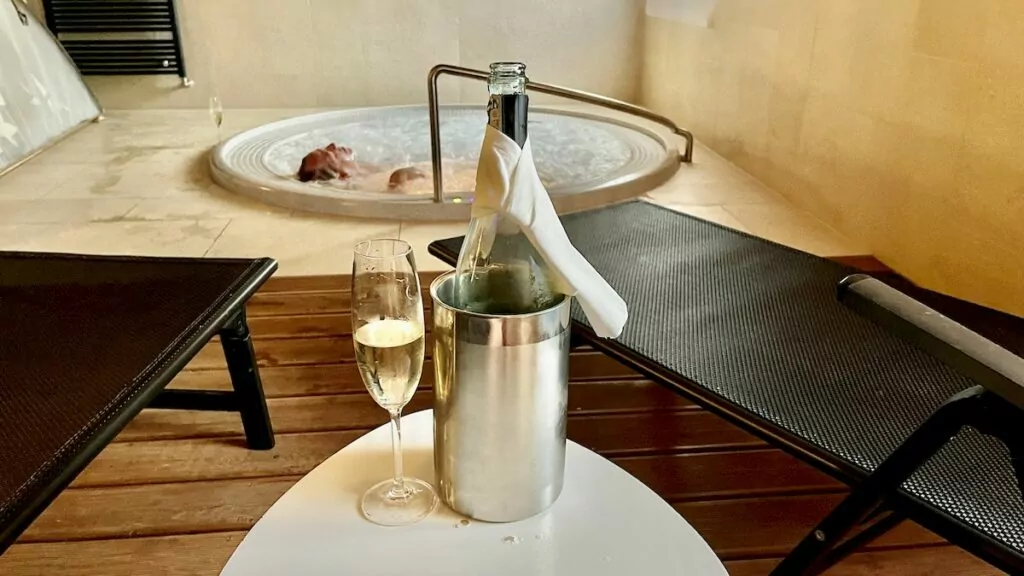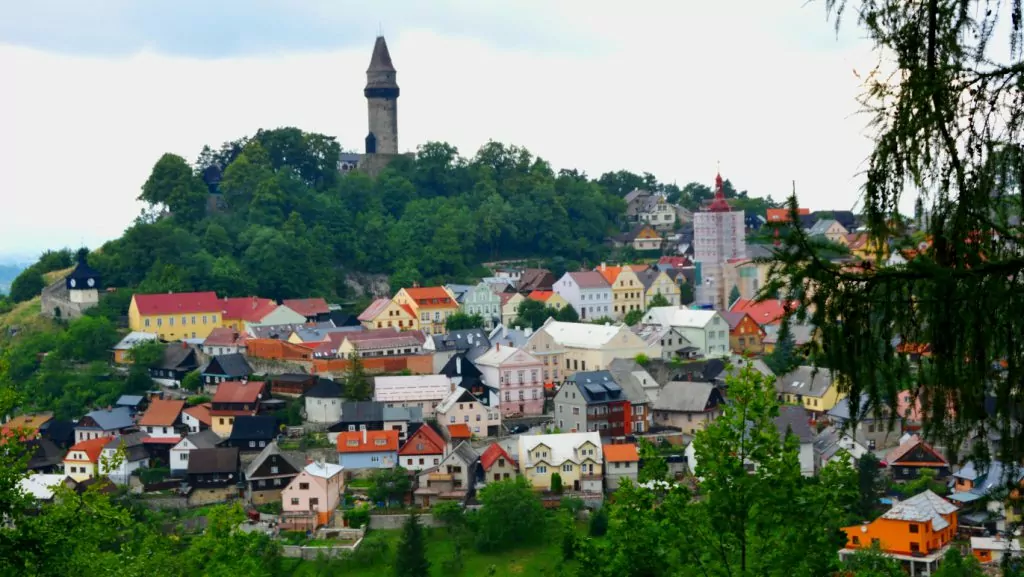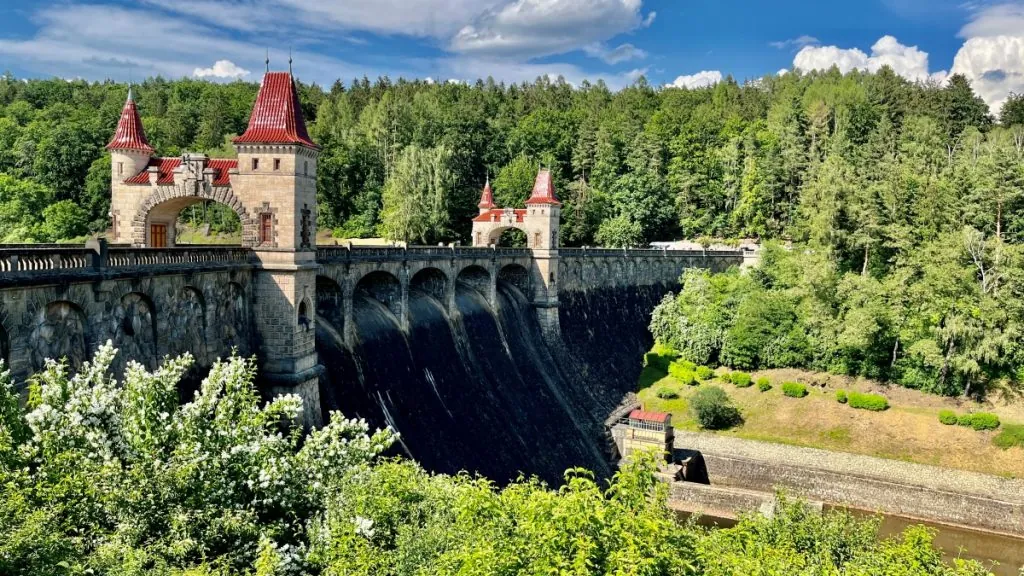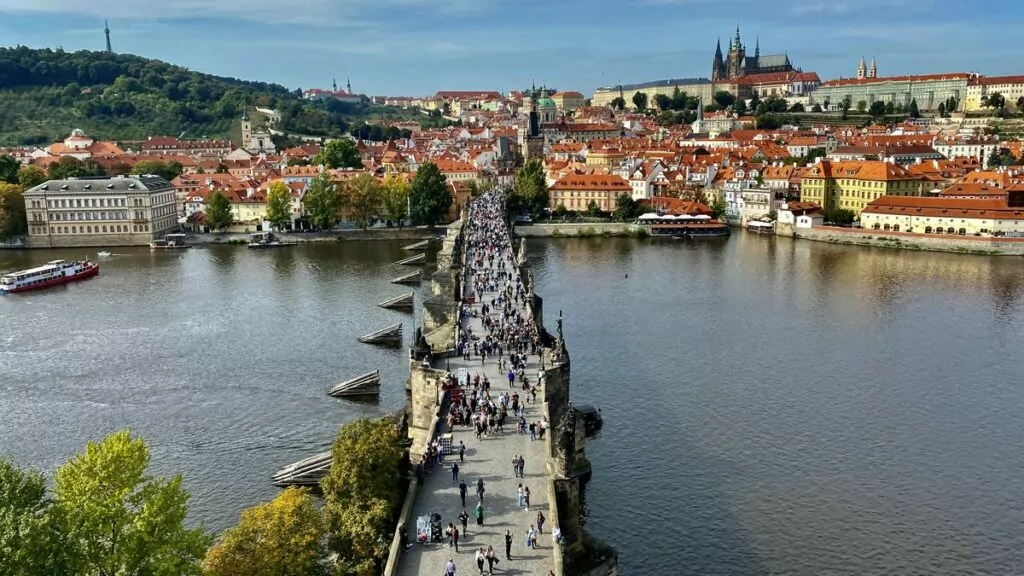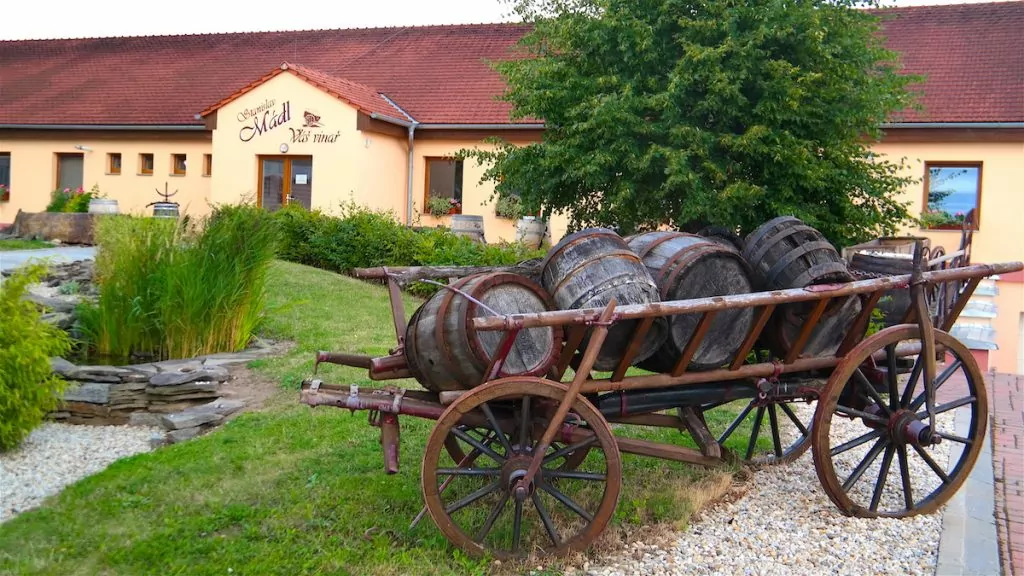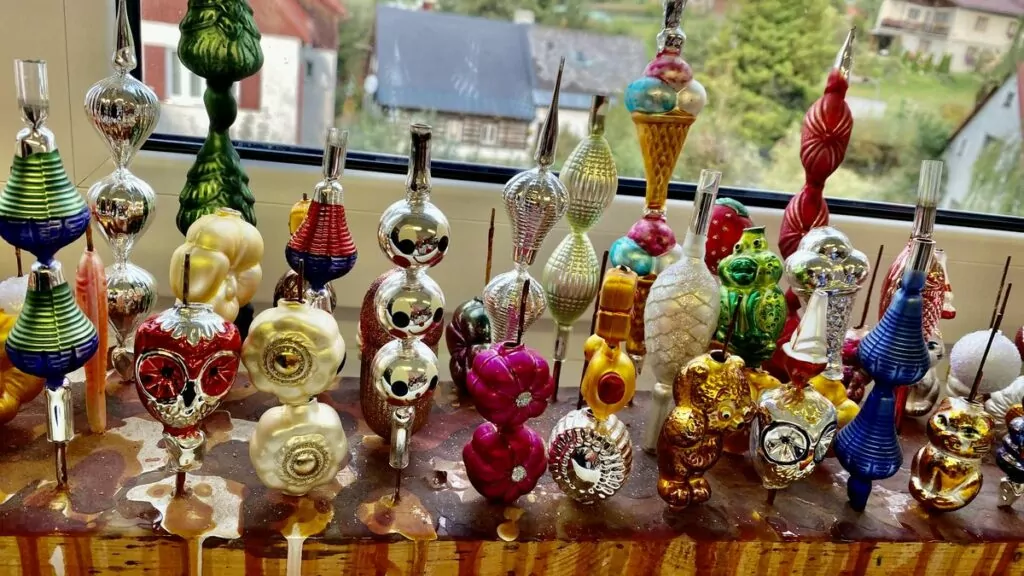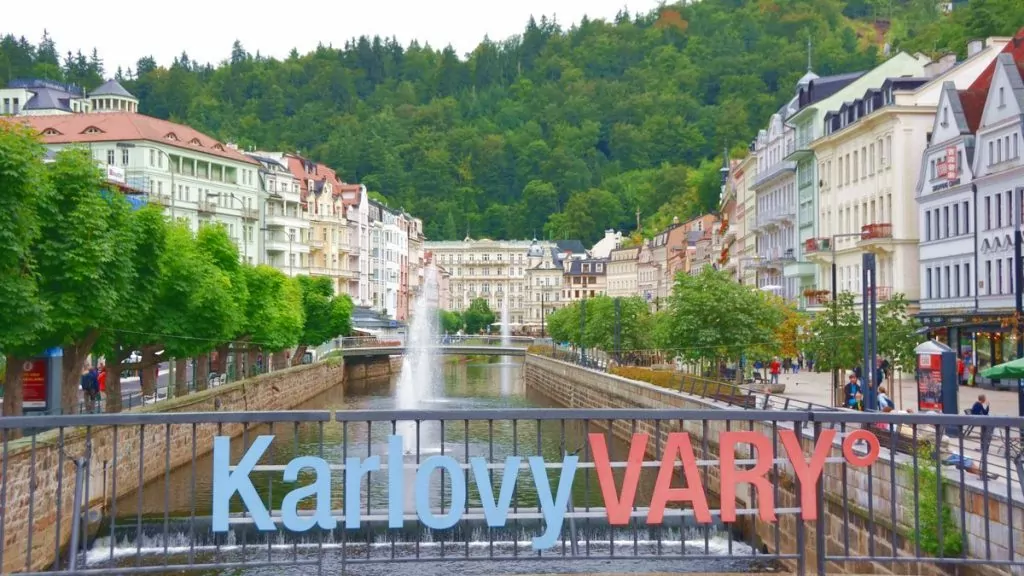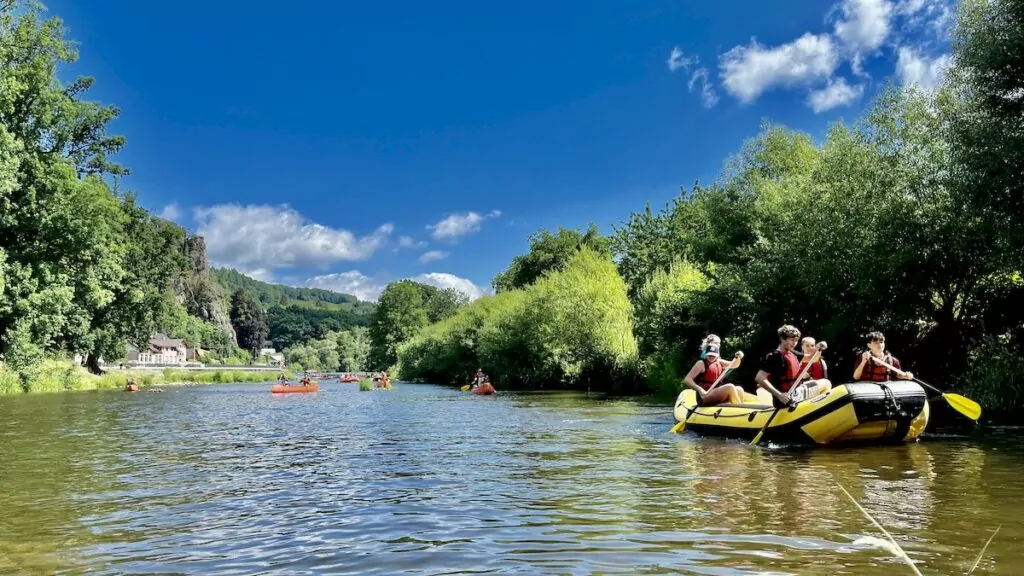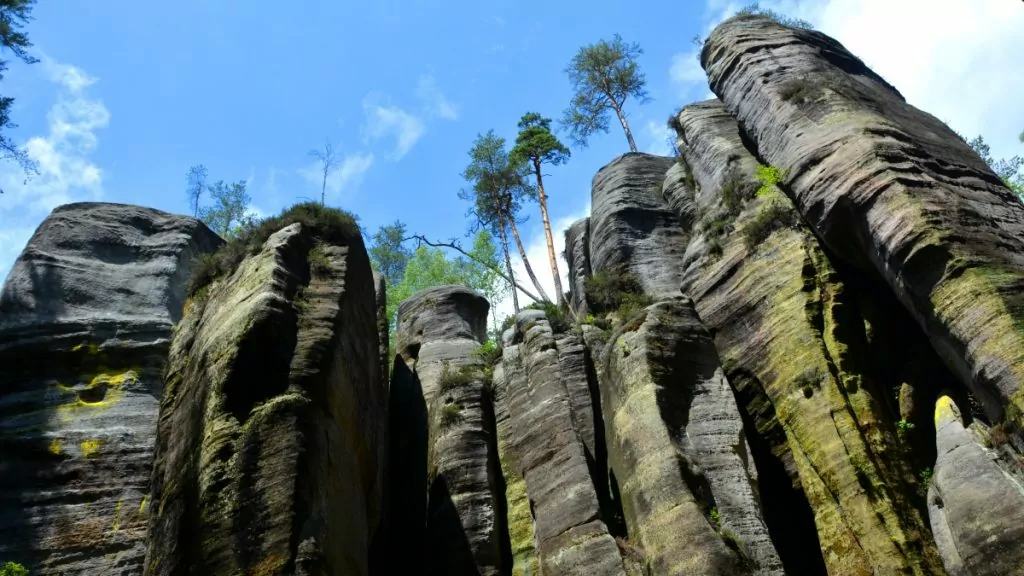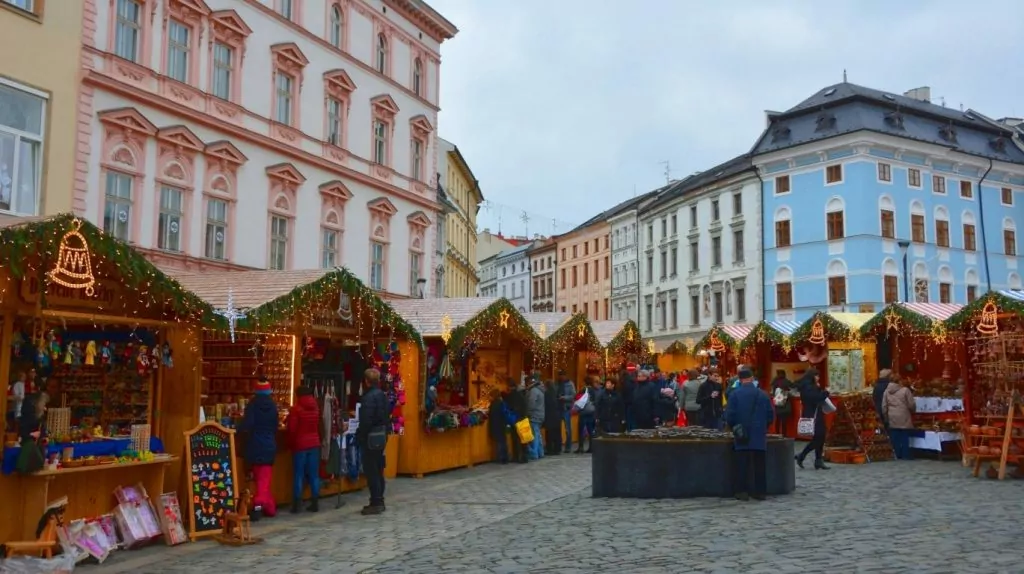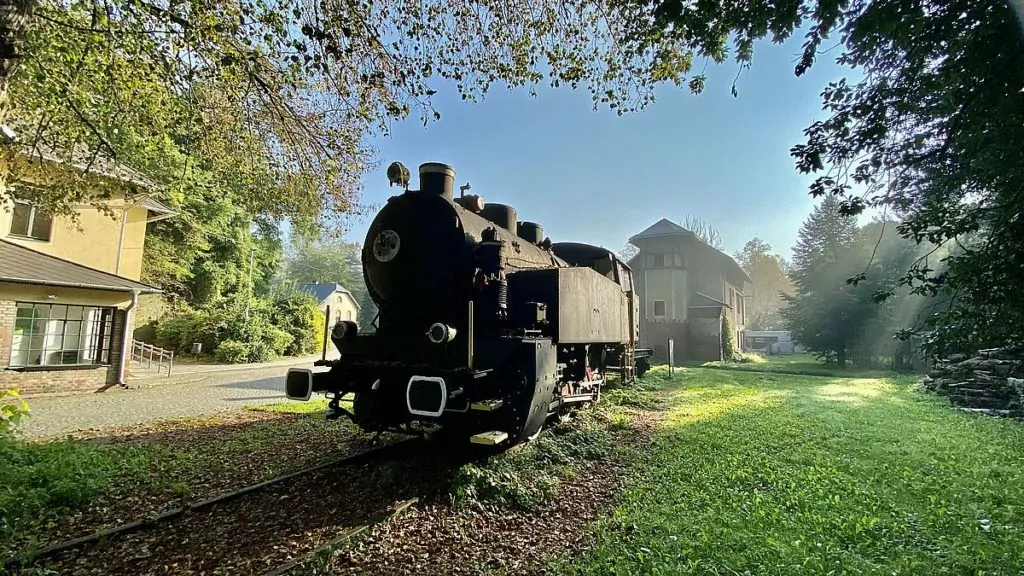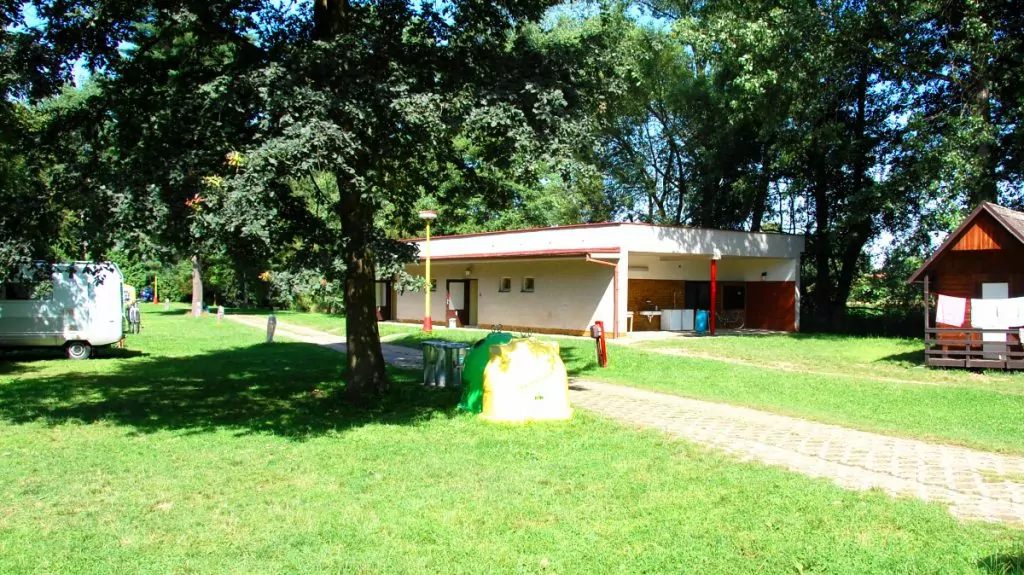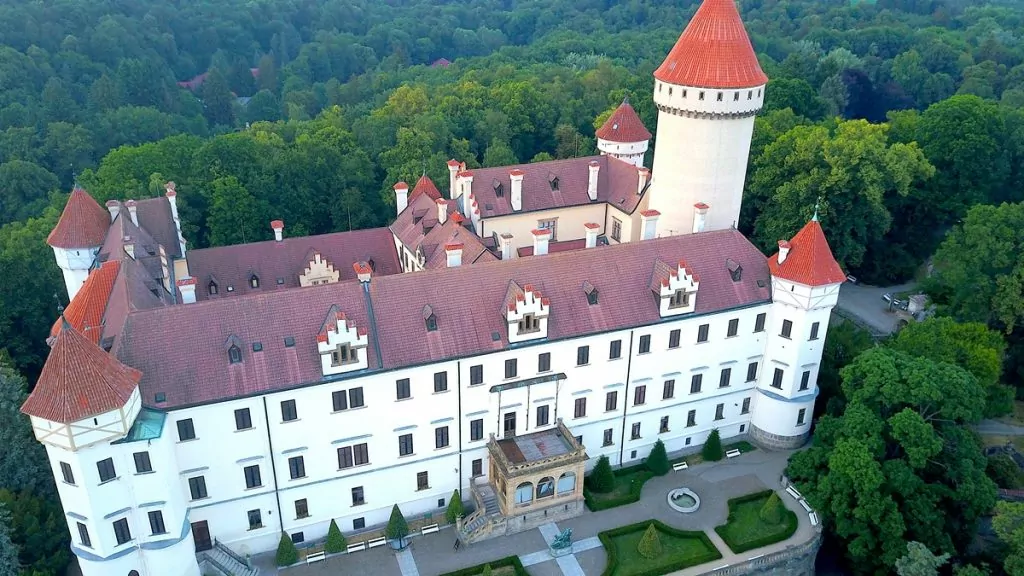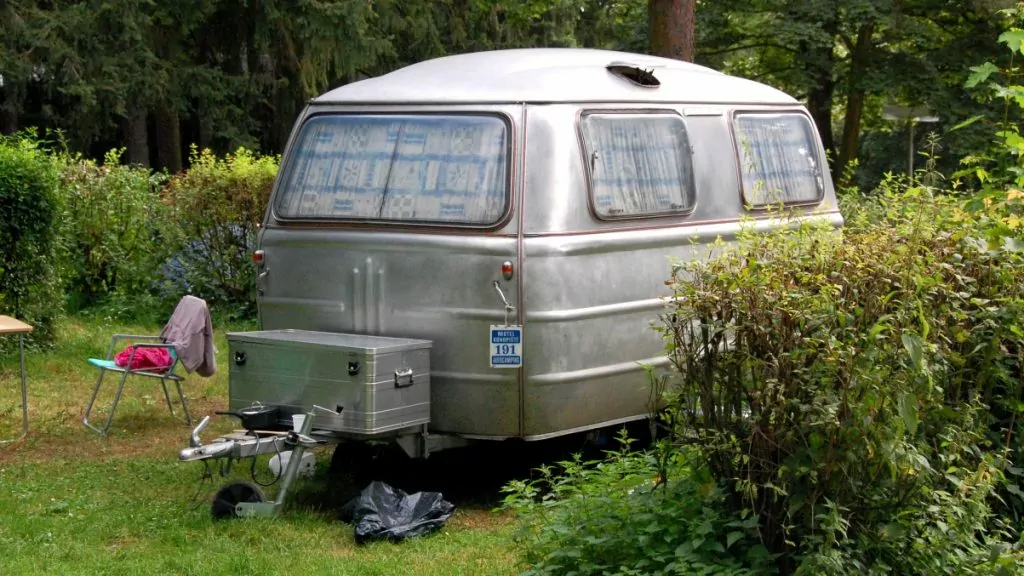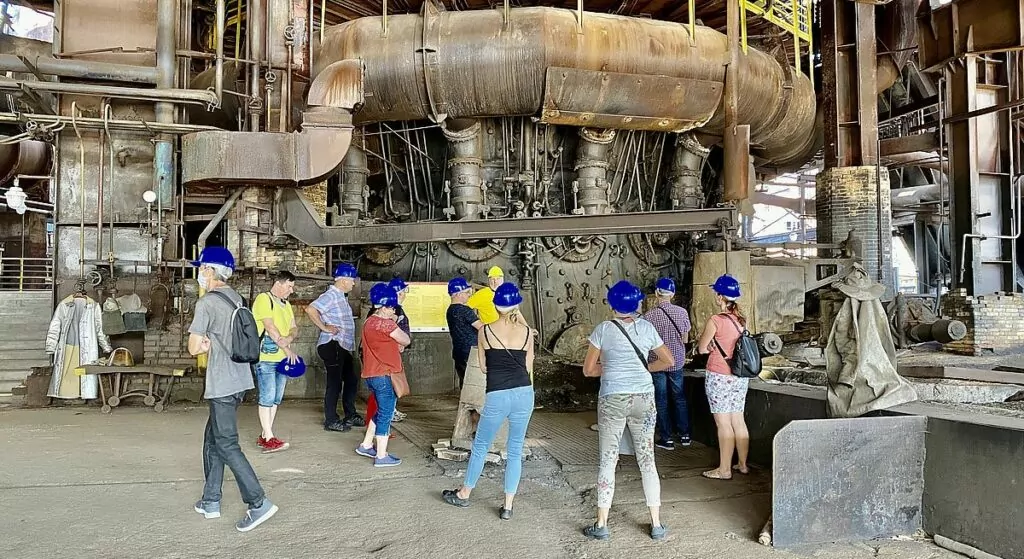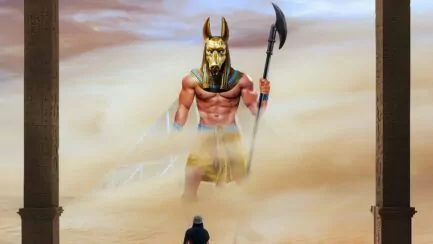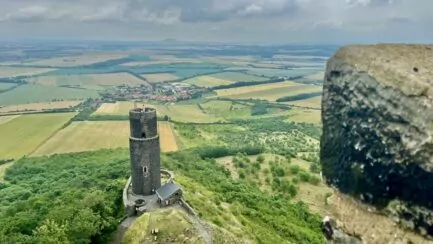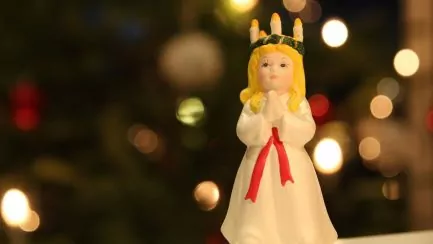Facts about the Czech Republic! Did you know that the sugar cube and soft contact lenses come from the Czech Republic? Or that Central Europe's largest wine barrel and Europe's largest sandstone arch can be found here? The Czech Republic boasts the most castles per square metre, drinks the most beer in Europe and has been named the sixth safest country in the world. Let's go!
Table of contents
Facts about the Czech Republic
The Czech Republic neighbours Austria to the south, Germany to the west, Slovakia to the south-east and Poland to the north-east. The country is very central in Europe, almost right in the middle.
Flag of the Czech Republic has a white top and a red bottom, with a blue triangle protruding from the left side.
1. Czech Republic has 14 Unesco World Heritage Sites
There are 14 World Heritage Sites in the Czech Republic, many of which are very exciting and interesting. Here you can read more about Czech Republic's World Heritage Sites. Do you recognise anything?
- Český Krumlov Historical Centre
- Prague's historic centre
- Telč historical centre
- Church of St John Nepomuk in Zelená Hora
- Kutná Hora: historical centre and the churches of St Barbara and the Church of Our Lady of Sedlec.
- Cultural landscape in Lednice-Valtice
- Gardens and castles in Kroměříž
- The historic village of Holašovice
- Litomyšl Castle
- The Trinity Column in Olomouc
- Villa Tugendhat in Brno
- Jewish Quarter and Church of St Procopius in Třebíč
- Mining region Erzgebirge/Krušnohoří
- Landscape for breeding and training of ceremonial driving horses in Kladruby nad Labem
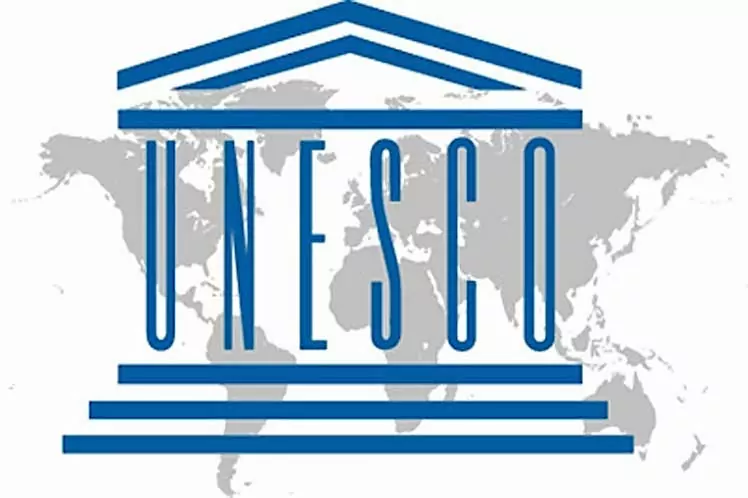
2. Many Czechs are atheists
Czechs are a bit like Swedes when it comes to religion. Overall, around 60 per cent are atheists and 30 per cent are Roman Catholics.

3. the Liechtensteins had a 'summer house' in Lednice-Valtice
The Lichtenstein family had this 'summer house', but when the war came and the Germans entered the Czech Republic (then Czechoslovakia), they fled. The Lichtenstein family was forced to leave Chateau Lednice, which was confiscated by the state, and they simply went to ... Liechtenstein. After the war, they have donated the castle to the Czech Republic. An absolutely fantastic castle!
Chateau Lednice, which today serves as museum, dates from 1846-1858, when Prince Alois II of Liechtenstein decided that Vienna was not suitable for summer holidays. Instead, he had the castle in Lednice rebuilt with sumptuous rooms for banquets for the European aristocracy.
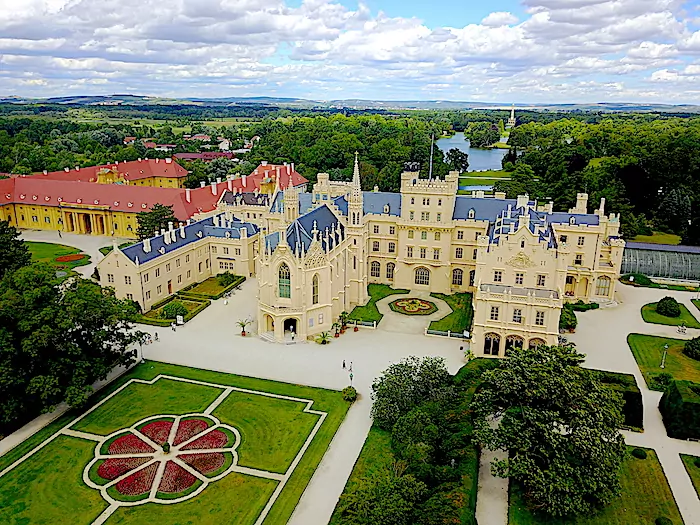
4. Europe's largest sandstone arch is in the Czech Republic
In Bohemian Switzerland there is a natural sandstone arch (Pravcicka Brana) which is the largest in Europe with a span of 26.5 metres, an internal height of 16 metres and a maximum width of 8 metres. The area, located in the northwest corner of the country, is full of rock formations, stunning greenery and hiking trails.
The area is fabulous with its high mountains, dense greenery and hotels and restaurants. The Czechs love the area and it is extremely popular for hiking, cycling, camping or perhaps kayaking in the Elbe River.
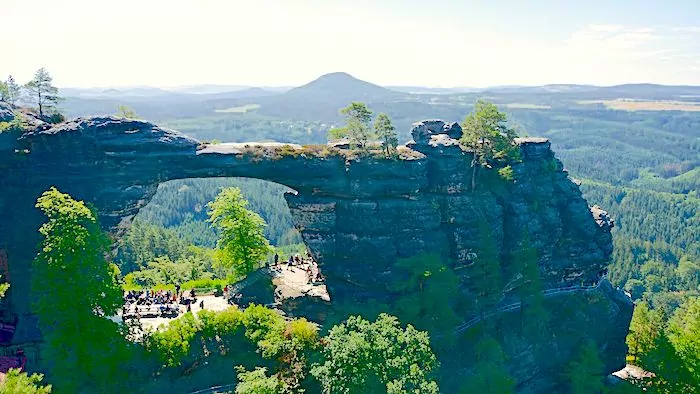
5. Sculptor David Černý is famous for crawling babies
Museum Kampa where these crawling babies are located, is in Sova's Mills on Kampa Island on the Vltava River in Prague. David Černý created these giant crawling baby statues.
Czech Republic's tallest tower is 216 metres and offers 360 degree panoramic views, with a restaurant and a hotel room. The TV tower is also famous for ten giant babies climbing the three pillars holding the tower, made by David Cerny.
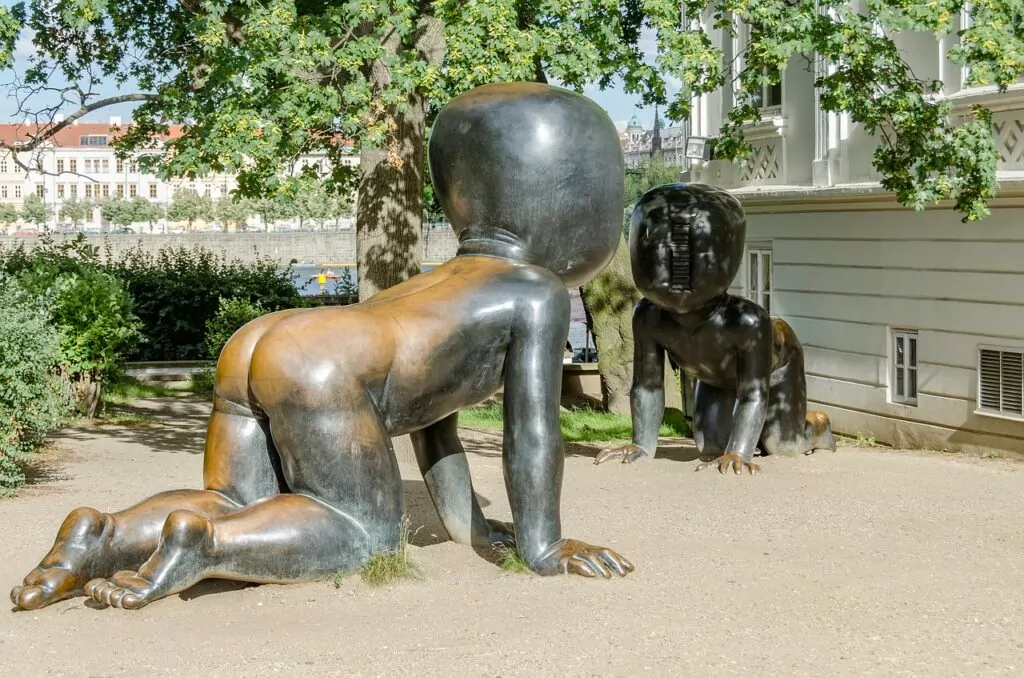
6. In the Czech Republic, you can bathe in beer at a beer spa.
Drink beer and bathe in beer at the same time! We're talking total spa! There are beer spas all over the Czech Republic and you can drink lots of cold beer if you can. Many serve good bread and offer a comfortable bed where you can relax after your spa. The bath is said to be good for everything - from psoriasis and cellulite to relieving stress.
Chadovar Beer Spa, which is 12 minutes by car from Marianske Lazne (Marienbad), is the oldest beer spa in the Czech Republic and uses beer from its own microbrewery. At Chadovar Beer Spa there are seven bathtubs in the same room, but all with curtains between them, and you have to bathe naked for hygiene reasons.
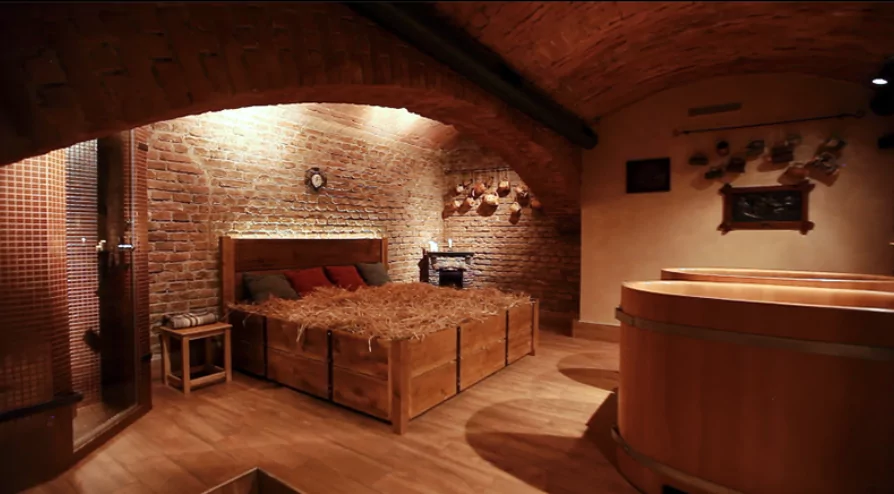
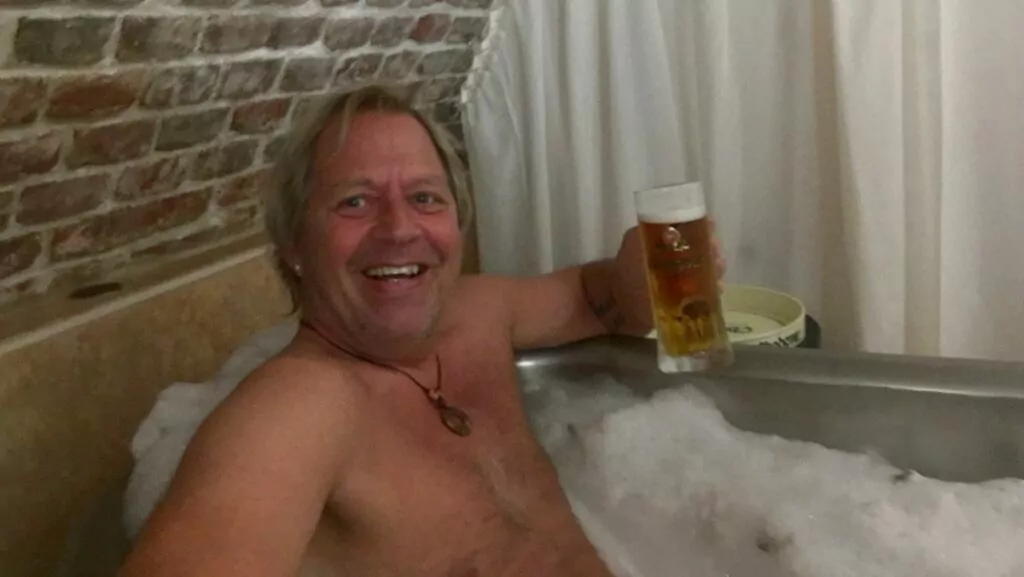
7. The founder of the food brand "Felix" comes from Znojmo
Herbert Felix comes from Znojmo in the former Austria-Hungary (now the Czech Republic) and the family business was founded in 1868. Back then the speciality was the Znaimer Gurken, which is still the town dish. The next time you see ketchup, French fries or any ready meal in Sweden, you'll know where Felix came from. "Felix makes good things better".
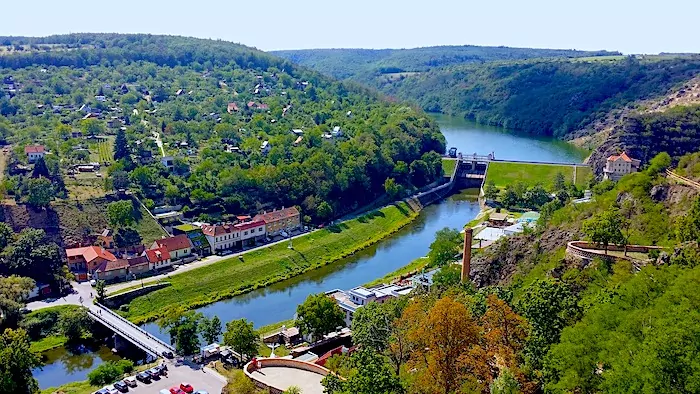
8. 20 layers of corpses in the Jewish cemetery in Prague
The oldest Jewish cemetery in Europe is located in the Josefov neighbourhood of Prague and contains 80,000-100,000 people in 20 layers. The first person to be buried here, in 1439, was Rabbi Avigdor Kara, and the cemetery was for a long time the only place for Jews to be buried in all of Europe. There are about 12,000 tombstones and each one has 8-10 different people in the grave and in different layers.
In the cemetery (starý židovský hřbitov), there is also a place for all children who did not live more than one year, called the Nephele burial mound. There are also remains of graves they found in the centre of Prague from the 14th century.
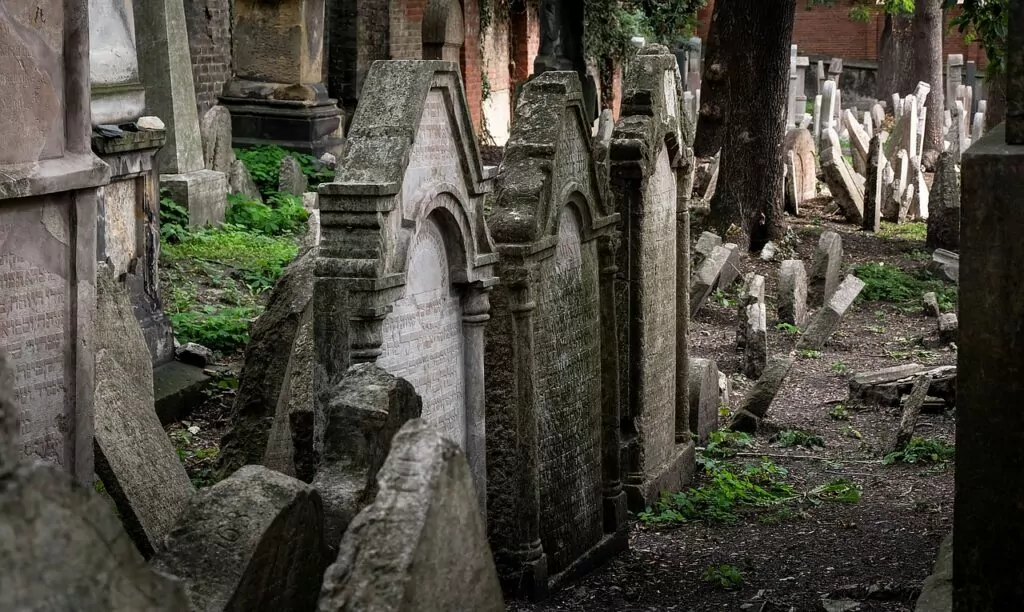
9. Strc Prst Skrz Krk
Where are the vowels? In Czech there are words without vowels, and in extreme cases you can create an entire sentence without a single vowel. For example, try saying "strc prst skrz krk"! This is a classic tongue twister that means "stick a finger down your throat".
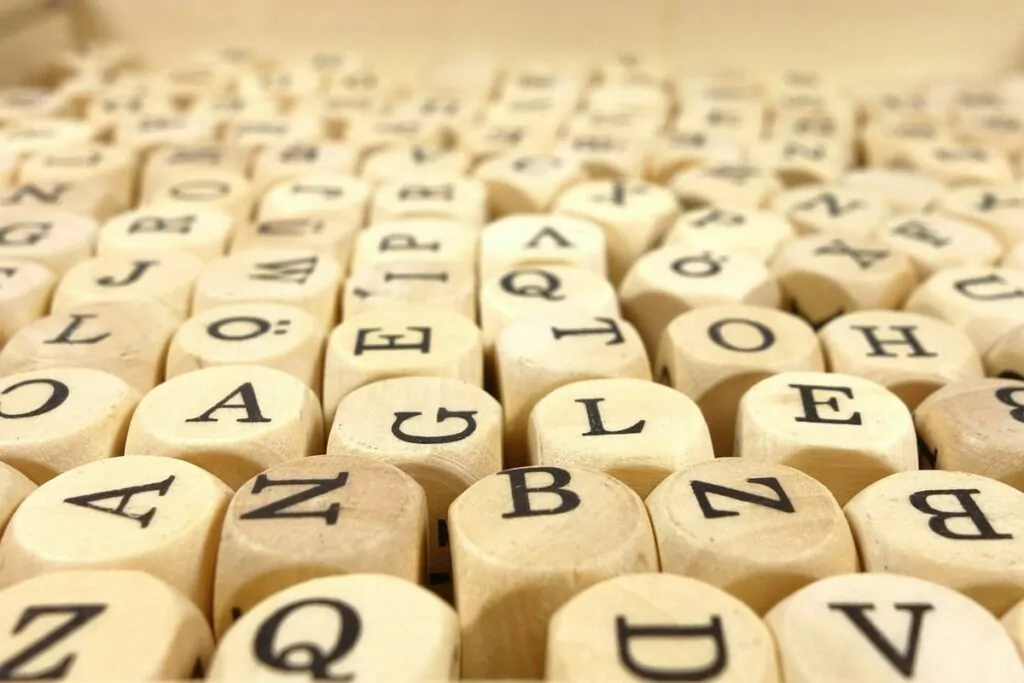
10. Czech National Library may be one of the most beautiful in the world
The Czech National Library is located in Prague's Klementinum. This baroque library is one of the most beautiful and oldest in Europe. The astronomical tower, which is 68 metres high, provides a wonderful view of the historic centre of Prague. The entire Klementinum complex covers 20,000 square metres.
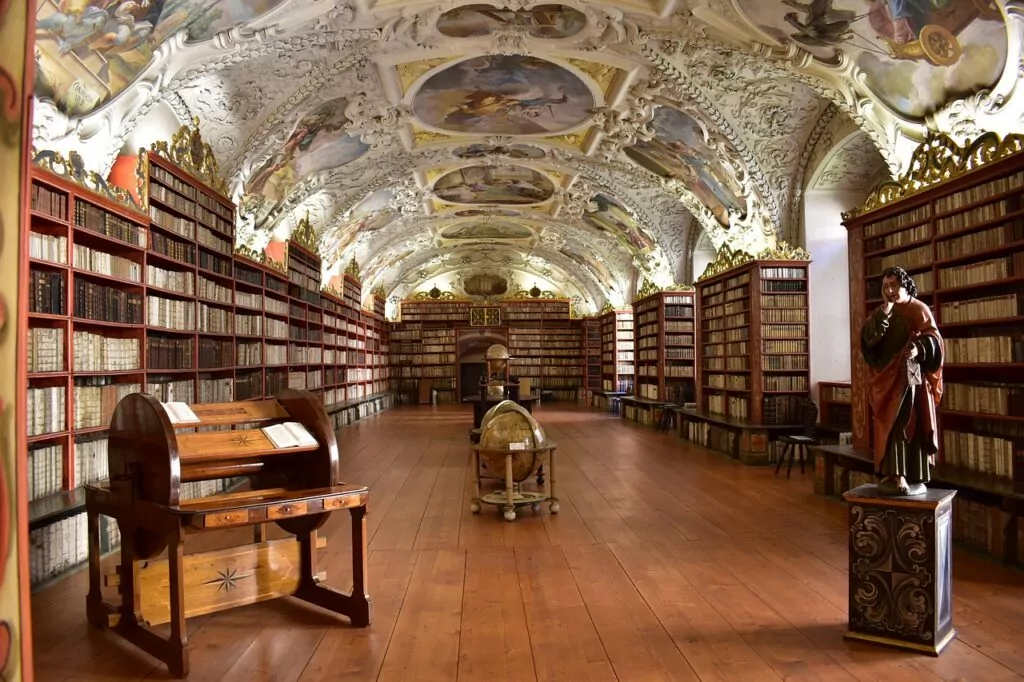
11. Mozart impressed in Brno as an 11-year-old
30 December 1767 Mozart, at the age of 11 with his 16-year-old sister Anna Maria Nannerl, played a concert in the Reduta Theatre (then the Tavern Theatre) which is still located in the main square (Zelný trh) in Brno. According to documentation, Mozart complained that the trumpets did not play in time ... Haha, crazy ... 11 years old!
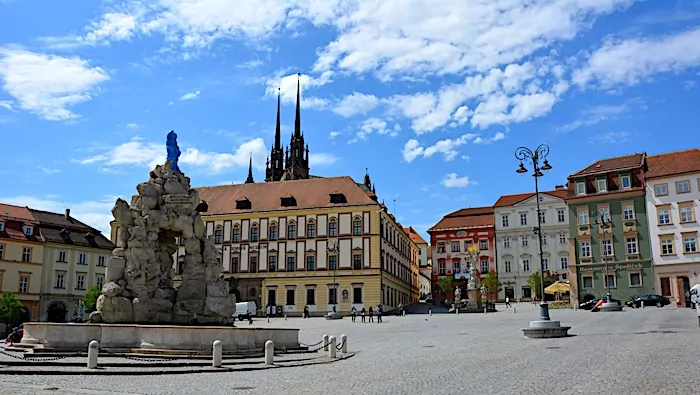
12. Olomouc was once the capital of Moravia.
Until 1618, Olomouc was the capital. in what was called Moravia (German Moravia) in the eastern Czech Republic. The Swedes arrived here in 1642 during the 30 Years' War, under the leadership of General Lennart Torstensson. The Czechs then moved the capital to Brno to protect anything of historical value.
The city offers baroque architecture and is the most significant cultural city in the Czech Republic after Prague. Olomouc brings together around 25,000 students each year, and the city has a strong focus on art and music.
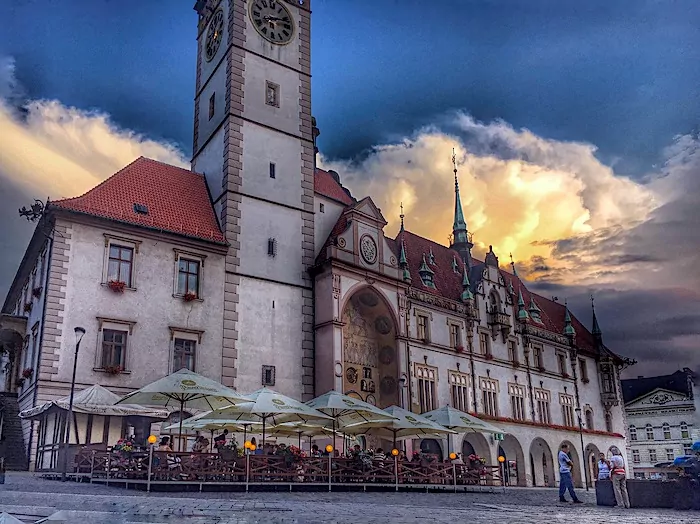
13. Prague has one of the largest castles in the world
Prague Castle (Pražský hrad) is one of the largest castles in the world. It has been home to the Kings of Bohemia, the Holy Roman Emperors and the Presidents of Czechoslovakia and the Czech Republic for hundreds of years. The castle stands on the western side of the Vltava River, and here you will also find the mighty St Vitus Cathedral, as well as the Belvedere Summer Palace with beautiful castle gardens.
On the Golden Street Prague Castle has charming little houses where craftsmen and riflemen lived from the beginning until the late 1950s. The most famous resident is probably Franz Kafka, who lived here in No. 22 for a short time in 1916-1917.
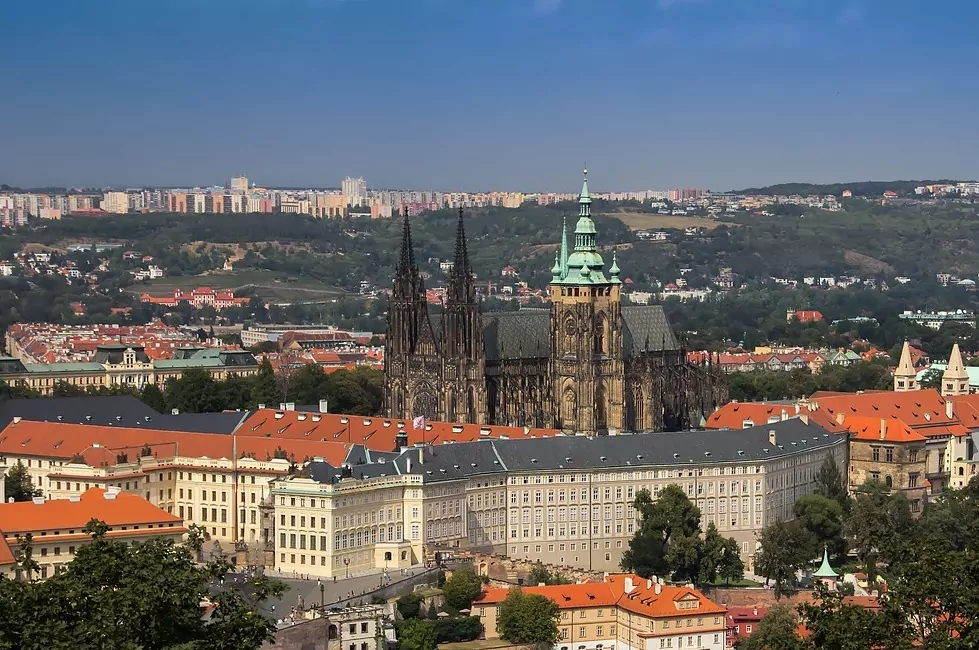
14. Czechs drink the most beer in Europe
Beer is part of everyday life in the Czech Republic. Breweries started in the 12th century and in those days it was better to drink beer than to drink water. The water was not purified during brewing and the bacteria disappeared.
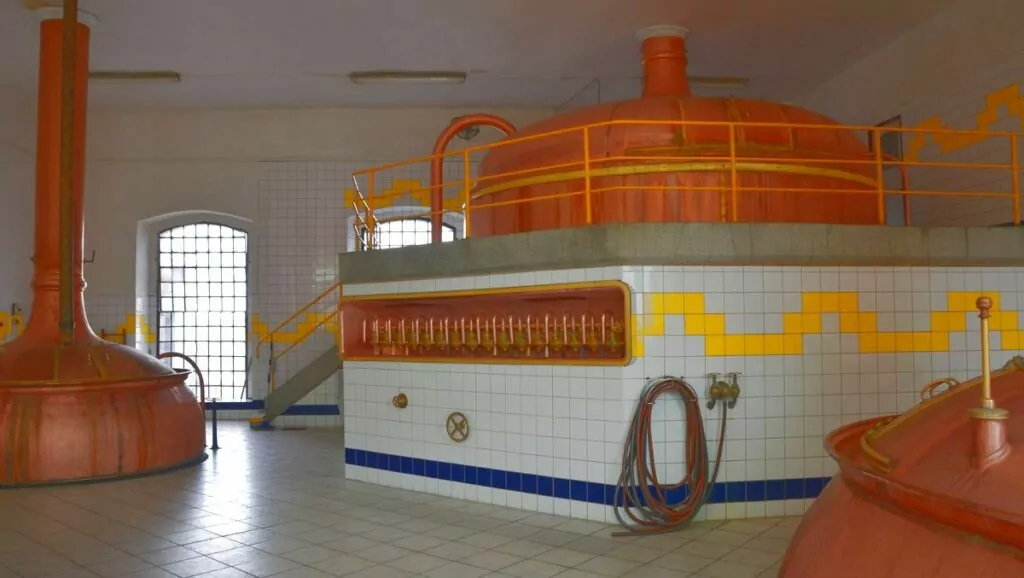
15. Central Europe's largest wine barrel emptied by Swedes
South of Brno beam Mikulovwhere you can find the largest wine barrel in Central Europe. The barrel is empty today, but holds about 100 000 litres of wine. During the 30 Years War, the Swedes emptied it.
When Sweden, with its 28 000 to take Brno against a few thousand Czechs, they entrenched themselves around the wine regions outside Brno. The wine barrel was empty when the Swedes left Mikulov, so it was more of a party than a war.
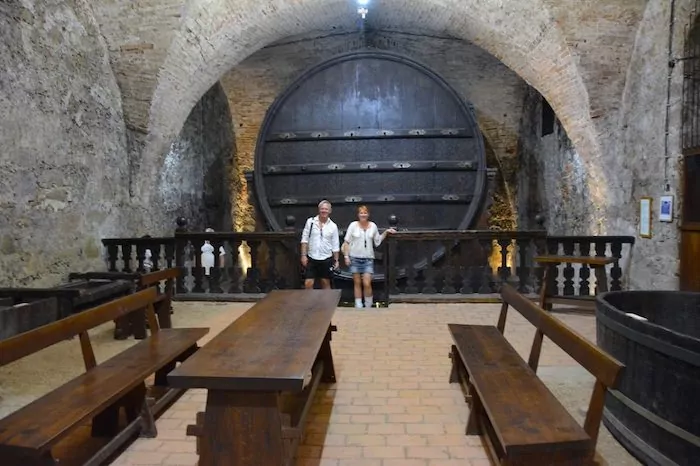
16. Brno had the first theatre with electric lighting
First out Europe as a theatre with electric lighting was the National Theatre (Mahenteatern) in 1882 in London. Brno. It was Thomas Alva Edison (the inventor of the light bulb) who lived in the theatre. What masterpieces!
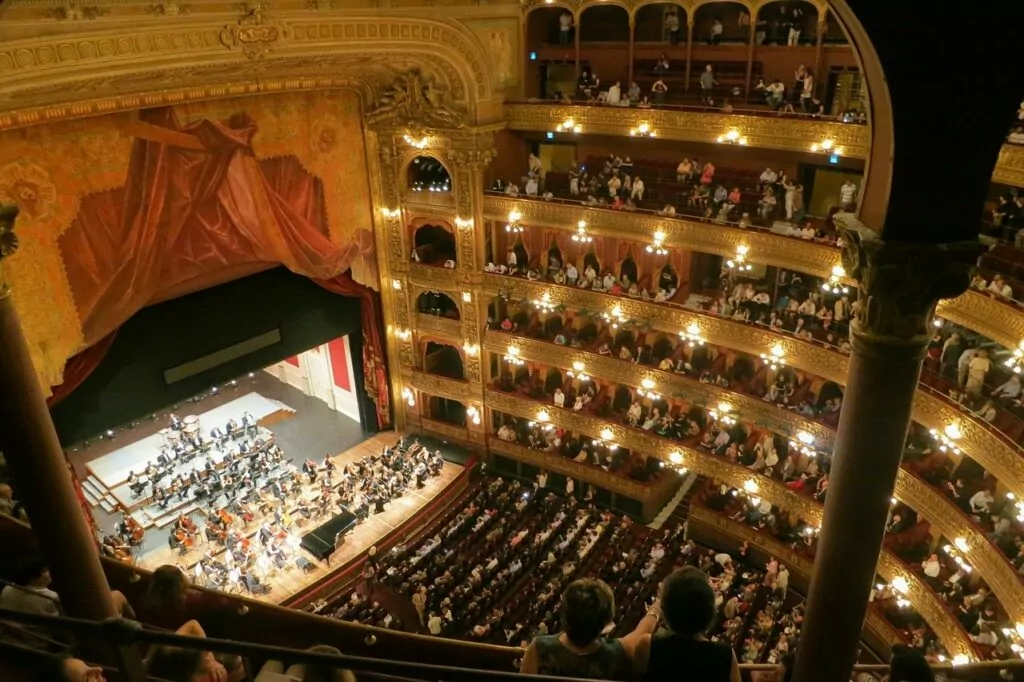
17. The Trinity Column in Olomouc has been saved from cannonballs
The Trinity Column in Olomouc was built in the early 18th century and is now a Unesco World Heritage Site. The column is 35 metres high and is richly decorated with religious sculptures. During the Prussian War, a cannonball is said to have hit one side of the column. It is said that the Czechs then contacted the enemy and asked them to fire on their heritage, which they did. What a story!
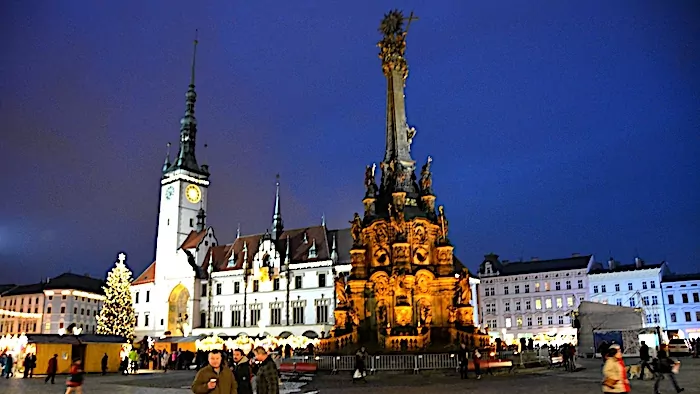
18. Crystal valley In northern Bohemia
470 years of ancient traditions of glass and crystal making can be found in the "Crystal Valley" in northern Bohemia, 100 kilometres north of Prague, where the crystal company Preciosa is the leader today. Glassblowers can be found in many companies in the Liberec region.
Daniel Swarovski was born in Northern Bohemia in the Czech Republic. and his father was a glass cutter. Swarovski was founded on a large scale in 1895 and moved its production to Austria, Daniel's son Wilhelm created a customised Swarovski binoculars in 1935 which today is the world's most famous. Today Swarovski is present in about 170 countries in the world with about 3000 stores and 29000 employees with a turnover of almost 3 billion Euros.
11 generations of Riedel with 260 years of glass making history which makes world-class wine glasses. It began in Christiansthal in northern Bohemia where, after three generations, their factory was blown up in the forest before World War II so that Germany could not use it. The son Claus Riedel was taken as a prisoner of war and put on a train but escaped from the train in the Alps and came to a village. Here there was a nearly blind old man named Daniel Swarovski, who took care of Claus Riedel and supported him financially to continue glass production, which became one of the most famous in the world.
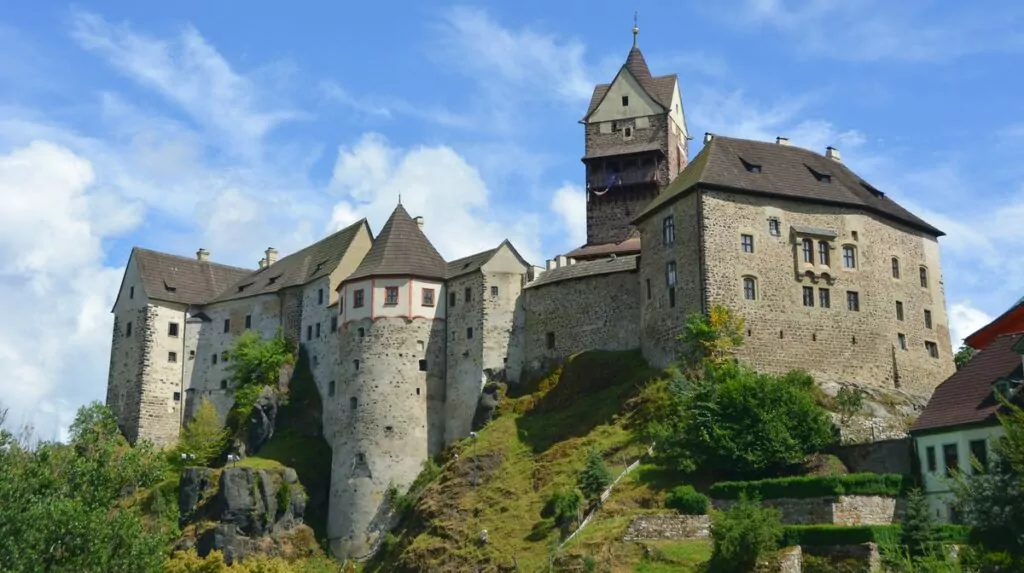
19. Czech Republic has plenty of skeletons, ossuaries and catacombs
The Sedlec Ossuary in the Unesco city Kutná Hora has bones and skeletal parts from 40,000 people. The whole church has been decorated in every possible way as an interior decoration. Not quite my style at home?
In Brno, 50,000 skeletons found in catacombs under St James's Church when the excavation for the underground railway was investigated in 2001. This ossuary is the second largest after the catacombs under Paris. In the 13th century, Brno grew fast and the cemetery next to Cabbage Square (Jakubské náměstí) became full. Tunnels were dug under the church to store the dead and make room for new graves.
For several hundred years these passages were filled in, but when plague and cholera struck, it became full again. More tunnels were dug in the 18th century, but in 1784 there were new reforms and the church was closed due to health problems. The descent to the catacombs was closed with a large marble disc with writings in Latin.
People died and everything fell into oblivion until 2001 when the catacombs were discovered. Jakubské náměstí (St James Square) is the place to go for a guided tour of death.
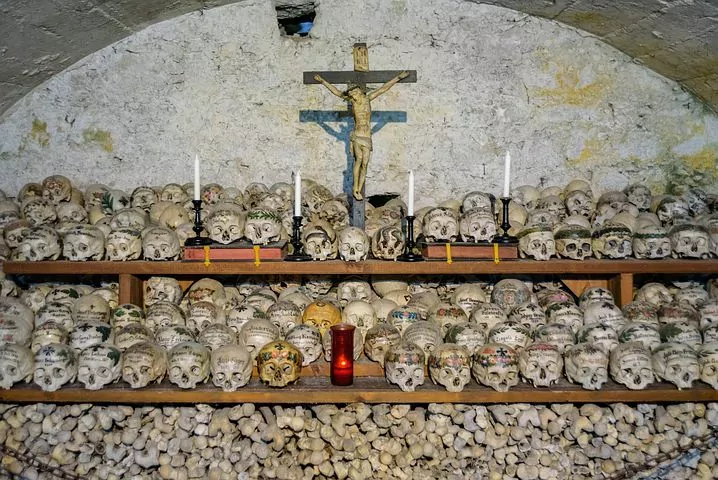
20. Author Franz Kafka was born in Prague.
Franz Kafka (3 July 1883 - 3 June 1924) is considered one of the great writers of the 20th century, and the Kafka Museum is now the most visited museum in the Czech Republic. The 1915 short story/short novel "The Transformation" was voted the world's best short story, with the first sentence reading "When Gregor Samsa awoke one morning from his troubled dreams, he found himself lying in bed transformed into a giant insect".
The novels The Trial, The Castle, and America/The Missing were published by best friend Max Brods against Kafka's wishes after his death.
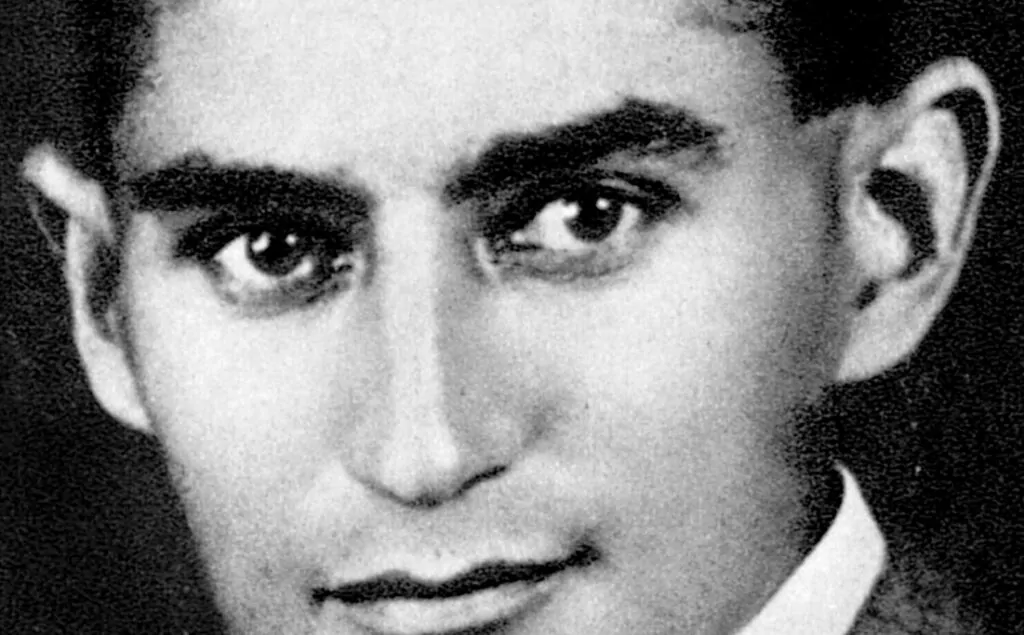
21. Central Europe's last and largest steel plant is in the Czech Republic
Industrial area Dolni Vitkovice The Bolt Tower in Ostrava, Czech Republic, is the last and largest steelworks in Central Europe. The first blast furnace was lit in 1836 and changed the Czech Republic in one day. The inhabitants quickly went from farmers to employees with a secure economy. The entire plant is still standing and it's like walking into a "terminator film"... harsh environment and crazy big.
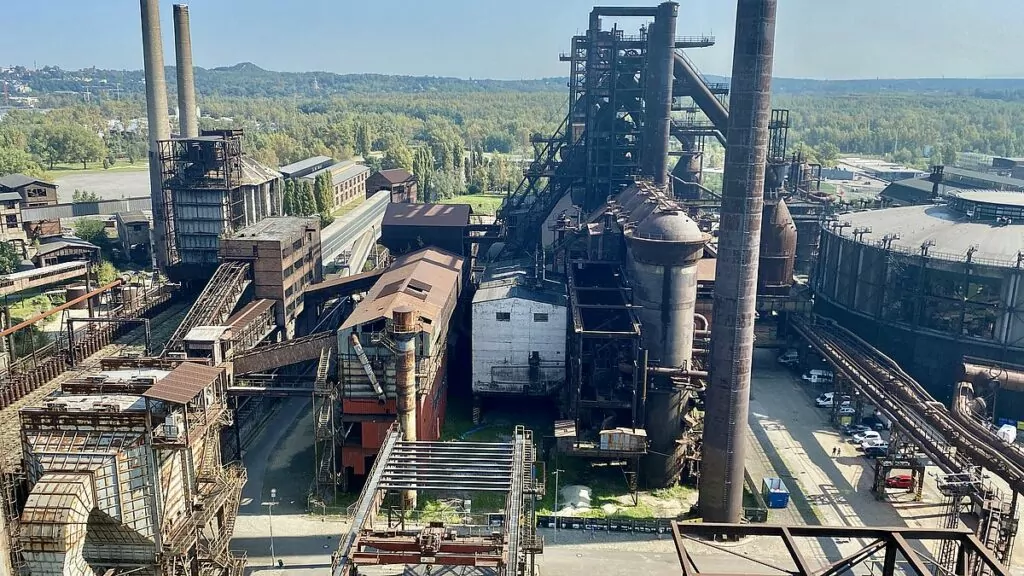
22. The king and queen of tennis come from the Czech Republic
The female giant of tennis Martina Navratilova! Wins: Australian Open 3 times, French Open 2 times, Wimbeldon 9 times, US Open 4 times. 167 singles titles and 177 doubles titles.
The Czech king of tennis, Ivan Lendl! Wins: Australian open 2 times, French open 3 times, US open 3 times. In the final 19 times. Born 7 March 1960 in Ostrava
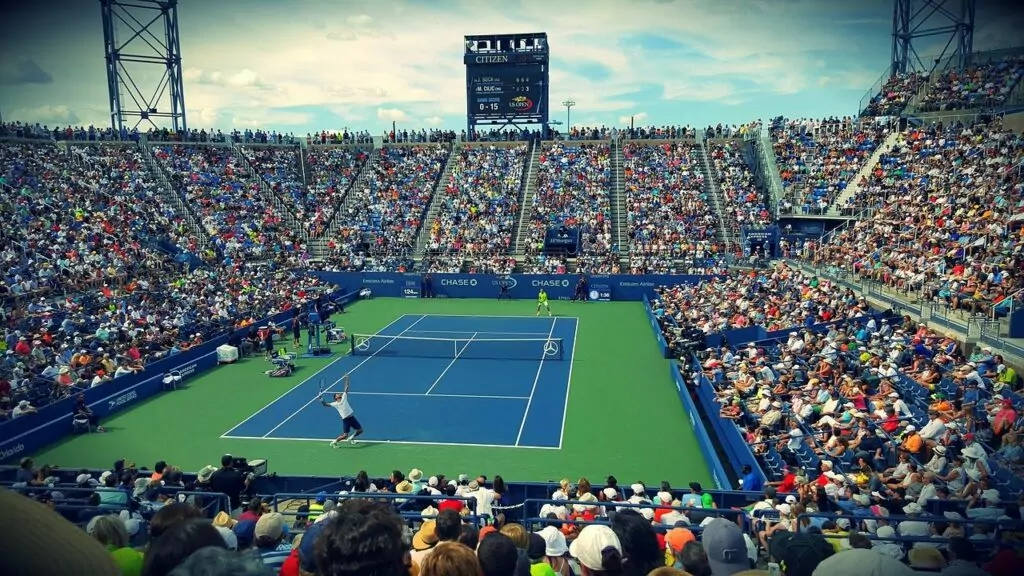
23. The Spa Triangle in the western Czech Republic
Karlovy Vary, Marianske Lazne and Frantiskovy Lazne belongs to the spa triangle of health resorts. Here, people still drink from spa cups from hot springs because health and spas are incredibly big, and have been for hundreds of years.
In the famous spa town of Karlovy Vary is also home to the famous Moser glassworks. It has been supplying glass to emperors, kings, queens and high society since 1857.
The oldest golf course in the Czech Republic is located outside Karlovy Vary. (Karlovy Vary golf resort). The golf course was founded in 1904 and originally had 9 holes. This is where the ocoetetes, dressed in fancy hats, went to learn how to play golf. Since 1933, the 4-star golf club has 18 holes.
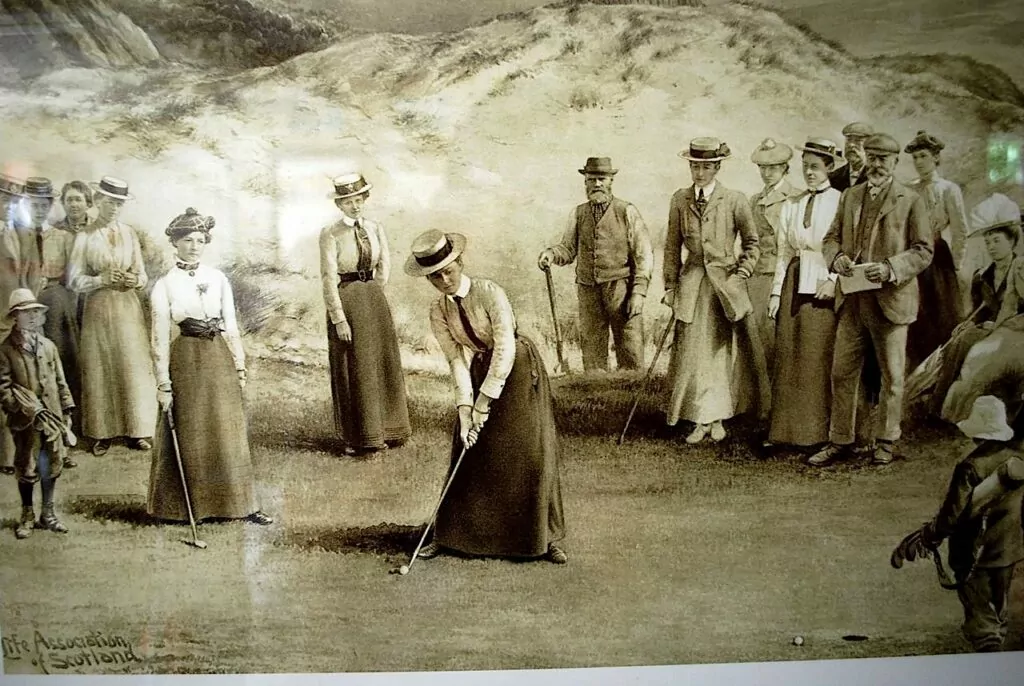
24. The Villa Tugendhat was the site of the agreement that dissolved Czechoslovakia.
One of the most interesting The sights in Brno are Villa Tugendhat. Greta and Fritz Tugendhat brought in the architect Ludwig Mies van der Rohe, who was a pioneer of modernist architecture. This villa, which is actually a UNESCO World Heritage Site, was built between 1929 and 1930.
It's not just the design that impressesbut also all the technical solutions. The large windows overlooking the garden can be raised and lowered at the touch of a button and the food is sent between floors by a dumbwaiter.
The strongest feeling is still about the history of the house. Greta and Fritz were Jewish, and as World War II's Jew-hatred approached, they were forced to flee headlong and leave their life's work behind. The family fled first to Switzerland, then to Venezuela and then back to Switzerland again.
What happened to Villa Tugendhat then? Well, the Gestapo took over ... The villa was used for everything from storage to a gymnasium. In 1993 in January, the agreement that dissolved Czechoslovakia into the Czech Republic and Slovakia was signed right here in the house. Today the house serves as a museum.
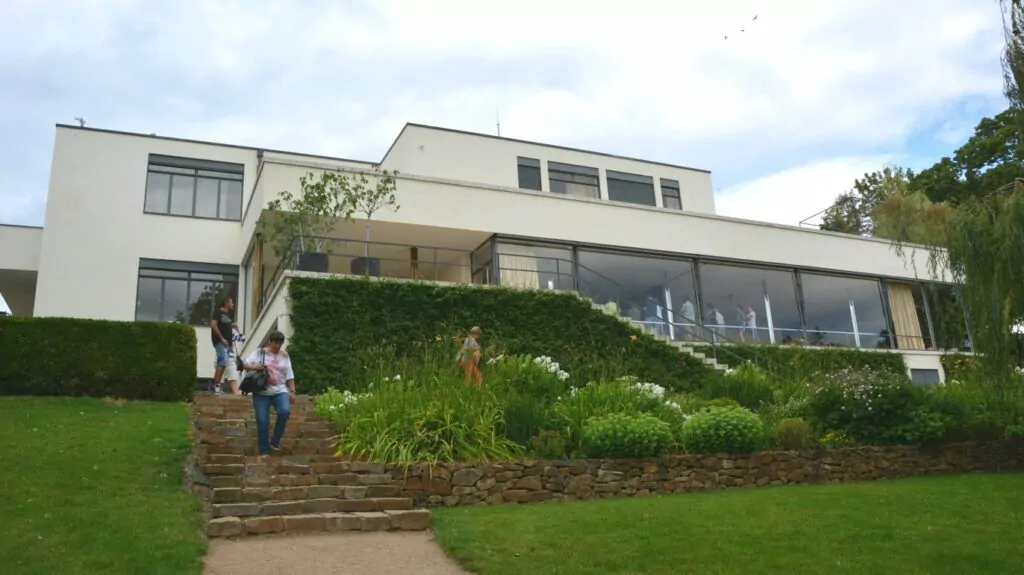
25. Czech Republic holds world record in castles
Over 2000 castles and castle ruins is in the tiny Czech Republic. It has the most castles per square kilometre in the world. Impressive! Here you can read more about castles and palaces in the Czech Republic.
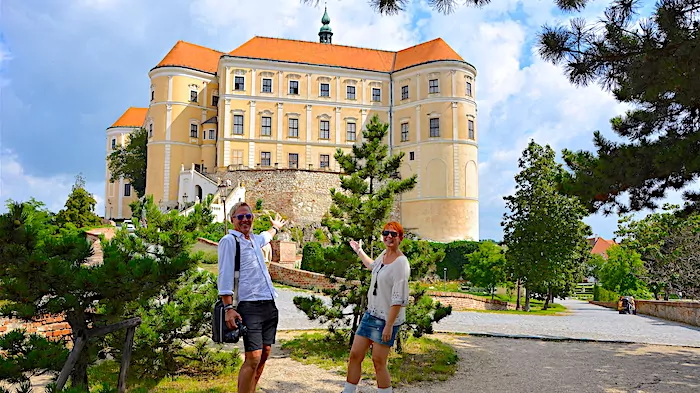
26. The world's oldest working astronomical clock is in Prague.
The oldest working astronomical clock in the world can be found in Prague. The first part of the clock (Pražský orloj) was built in 1410 by Mikuláš of Kadaň and Jan Sindel, later by Master Hanus. Legend has it that Master Hanus made the clock so beautiful that the rulers did not want him to do the same for anyone else, so they gouged out his eyes when he finished.
The clockwork is in the old town hall from 1338, with a 69.5 metre bell tower on Prague's historic square. The clock shows the hours and minutes, but also the day, the movement of the sun, the moon's orbit, the season and the sign of the zodiac. Every hour, windows are opened and some of the apostles appear.
Ten years after Prague Olomouc received its astronomical clock. In the last days of the Second World War, the Germans destroyed the clock. The communists restored it but thought the figures should be workers and not angels. Even today, it is workers who move through the carillon in Olomouc ...
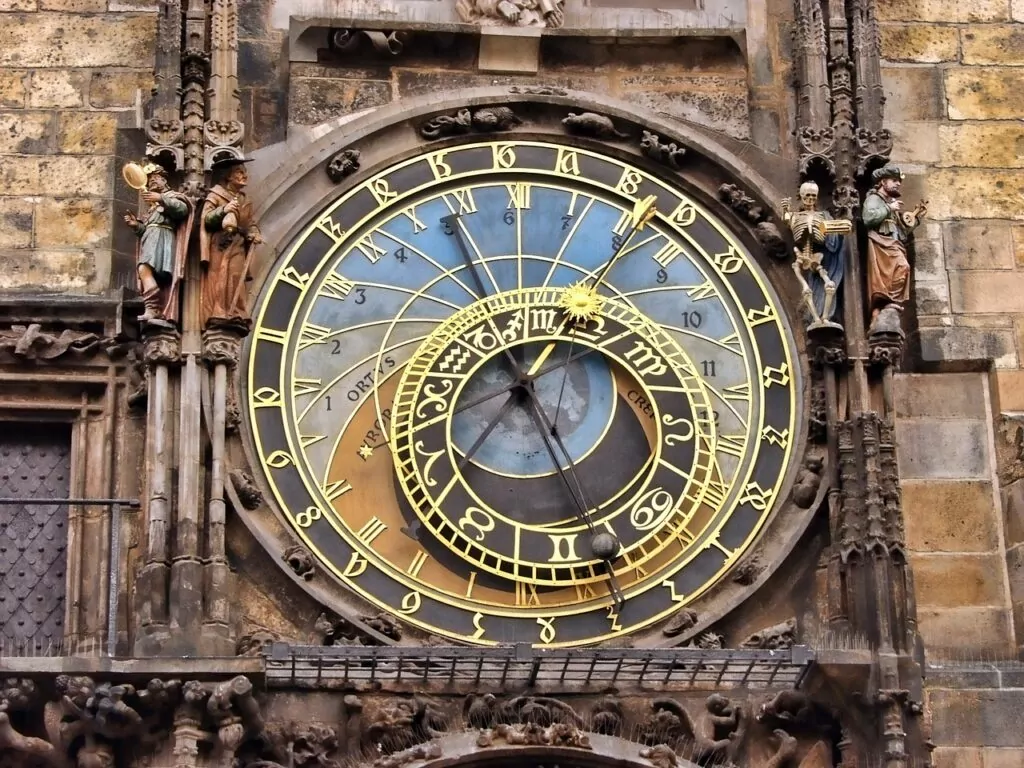
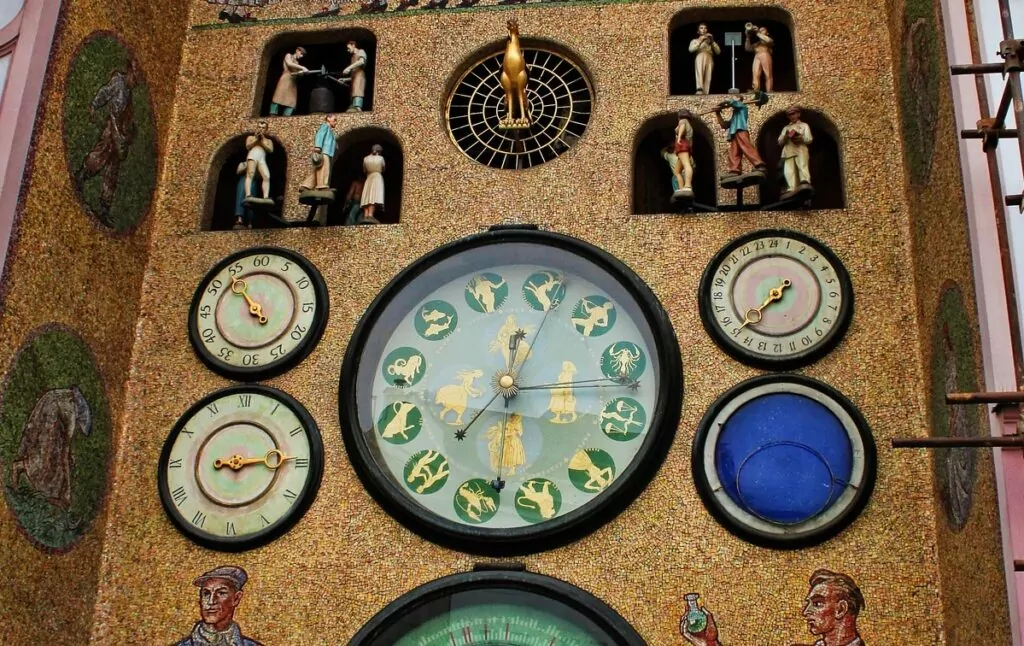
27. the Czech Republic's national dish includes dumplings
The national dish of the Czech Republic is Vepro-knedlo-Zelo, if you can pronounce it. The dish consists of pork in cumin with sauerkraut and Czech potato dumplings.
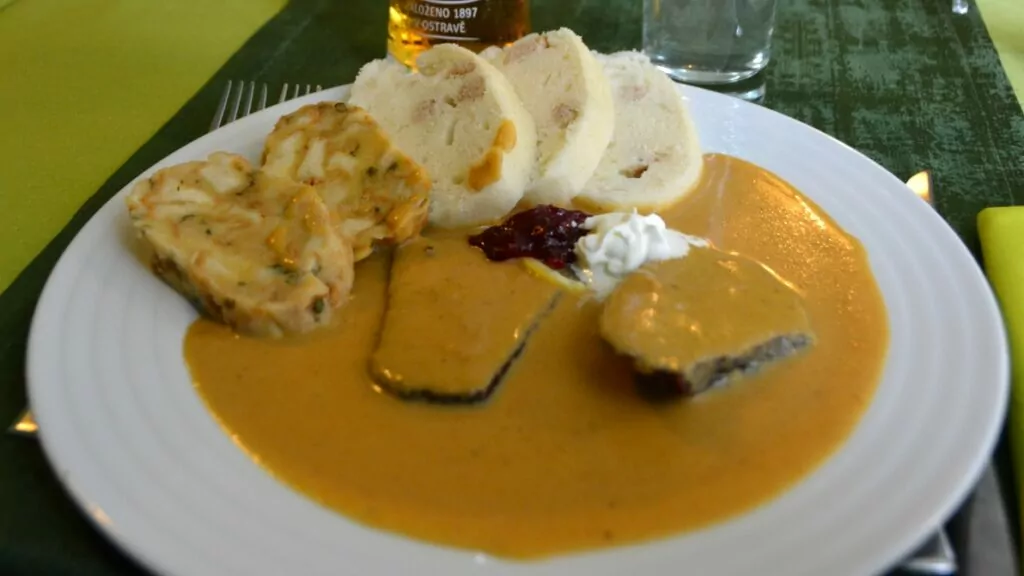
28. The Swedish army was stopped on the Charles Bridge in 1648.
Charles Bridge is the oldest and most famous bridge over the Vltava River in Prague, built during the reign of Charles IV in 1357-1402. The bridge is 515.8 metres long, 10 metres wide and has 16 arches with 30 statues. Charles Bridge replaced the older Judith Bridge, which collapsed during the flood of 1342. Farmers had to deliver fresh eggs all the time, which were mixed into the mortar to make the bridge stronger.
On 25 July 1648, the Charles Bridge was the scene of fierce battles with the Swedish army, which tried to take the Old Town but was stopped on the bridge. If you want the whole amazing story of the Charles Bridge, there is a museum about the bridge (Charles Bridges Museum) in Prague.
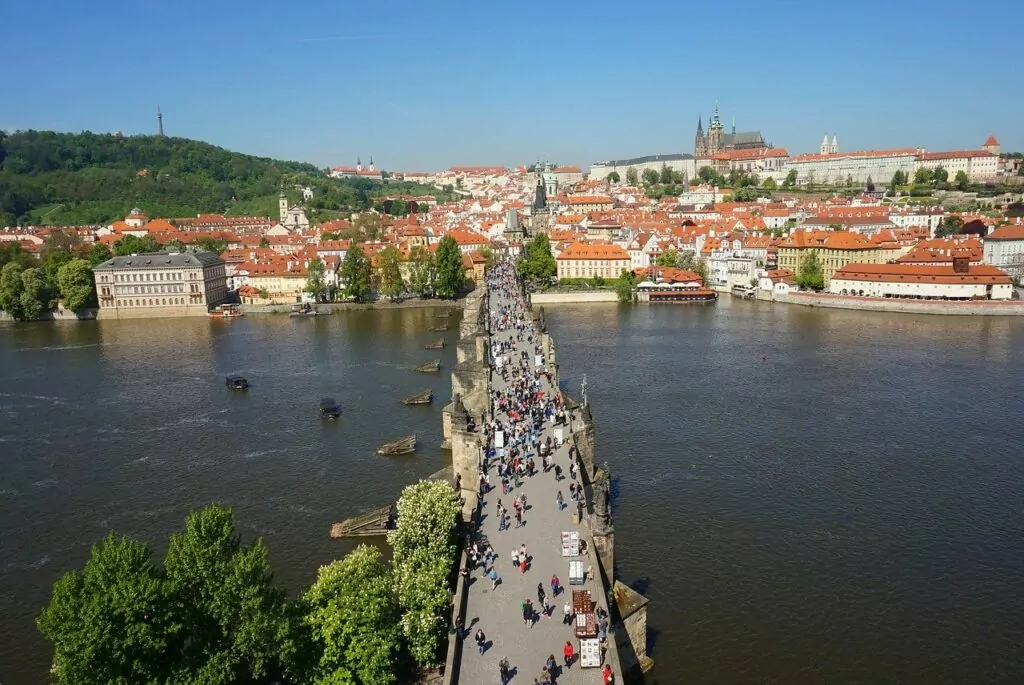
29. Prague has the oldest synagogue in Europe
Gammalnya Synagogue, located in Josefov in Prague is the oldest synagogue in Europe, built around 1270. It stands alongside five other synagogues, a town hall, the Jewish Museum and the Jewish cemetery. Rabbi Loew, who worked here, is known, among other things, as the creator of the clay Golem, which was supposed to protect the Jews of Prague.
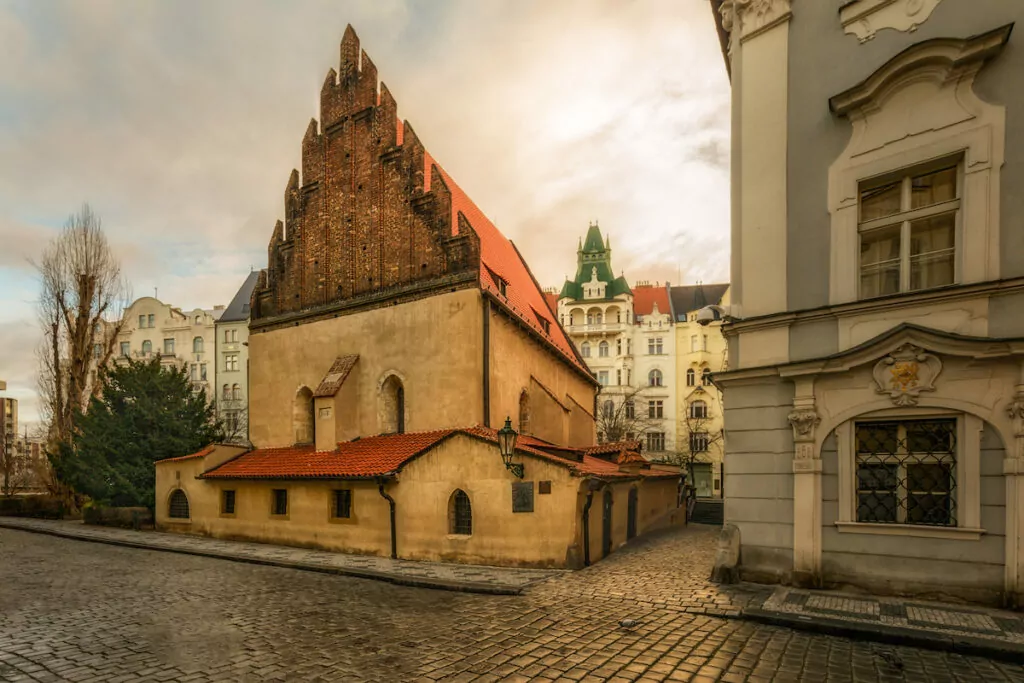
30. Ice hockey player Jaromír Jágr is from the Czech Republic.
Jaromír Jágr, born 1972 in Kladno, Czechoslovakia (no. 68 on the back) in ice hockey is a goal-scoring forward who has won the NHL's scoring league 5 times, including 4 times in a row. Jágr as we know him has also won two Stanley Cups with the Pittsburgh Penguins, with Mario Lemieux among others.
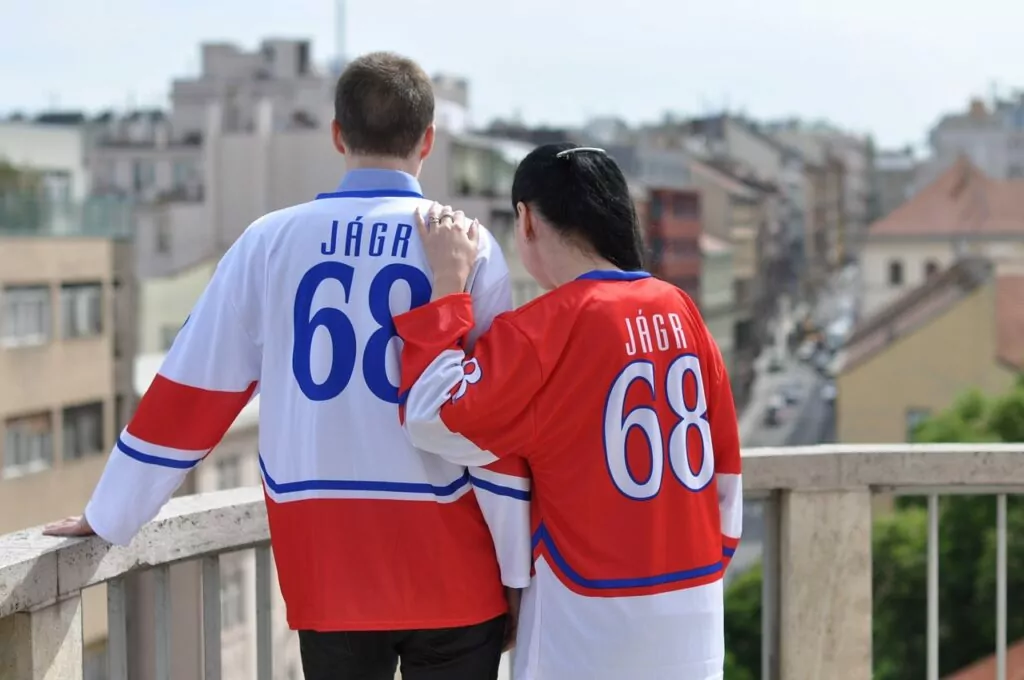
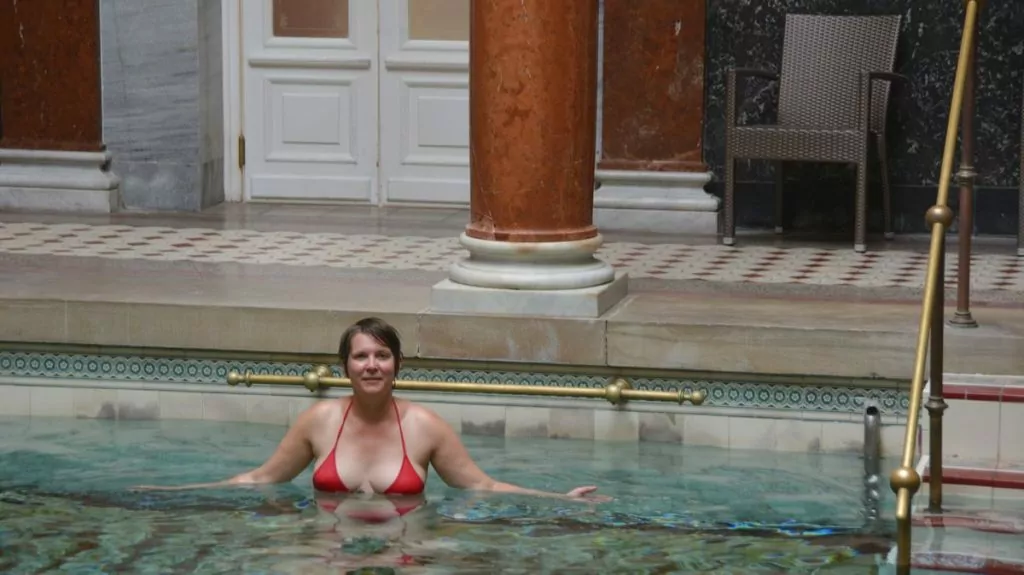
More interesting facts about the Czech Republic
- The world's longest suspension bridge in the Czech Republic is 721 metres long, 95 metres high and will be completed in May 2022, in the Kralicky Snezník mountains in the north-east of the Czech Republic on the border with Poland.
- Stavovské divadlo (Estates Theatre) was built between 1781-1783 in Prague and is forever linked to the works of Wolfgang Amadeus Mozart. The opera Don Giovanni was conducted by Mozart on 29 October 1787.
- The Czech Republic's neoclassical City Opera was built in 1883 and opened with Wagner's Master Singers in Nuremberg in 1888, as the first German opera house in Prague.
- Supermodel Petra Nemcova (24 June 1979) who, after two appearances in Sports Illustrated, has a stellar career.
- Czech Republic's national anthem is called Kde domov muj (where is my home).
- Wencel of Bohemia also called St Vaclav (Czech) and is the patron saint of the Czech Republic - Prague and Bohemia in the Roman Catholic Church since 28 September 935.
- During the Prague Spring in 1968 Russia entered Czechoslovakia to stop liberal developments in the country. On 16 January 1969, student Jan Palach set himself on fire in protest. He died 3 days later and 800 000 people attended his funeral. A memorial is located in front of the National Museum in Wenceslas Square, and is honoured every year on 16 January. This is believed to be the start of the Velvet Revolution 20 years later in 1989, when the Czech Republic broke free from the Soviet Union.
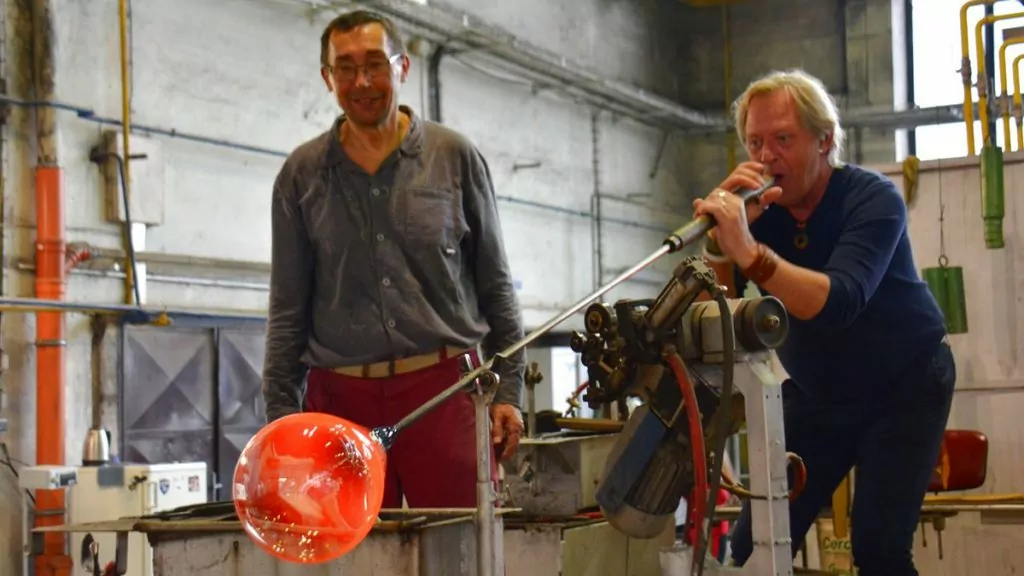
- Tycho Brahe was born on 14 December 1546 in Skåne., then part of Denmark. He died on 24 October 1601 in Prague and was a Danish astronomer, astrologer and alchemist. Tycho had his own observatory since 1570 on the island of Ven near Helsingborg, and later came to Prague and became a specialist to the court in Prague. He is buried in the stunning Týn Church in Prague. The church dates from 1435 and is the main Hussite church in Prague.
- Johannes Kepler 1571 - 1630 in Regensburg was a German astronomer, mathematician and physicist. He succeeded Tycho Brahe as imperial mathematician in Prague in 1601. A brand new star appeared in the sky in 1604, one of three supernovae observed in the Milky Way in the last thousand years. A student brought the star to Kepler's attention and Kepler wrote a book about it. Probably because of the book, Kepler was recognised as the discoverer and the supernova was named Kepler's Star.
- The two twisted houses in Prague (Tančící dům) are the dancing houses. The actual name was Fred and Ginger (after the famous dancers Fred Astaire and Ginger Rogers).
- Michelangelo Islands can recommend as many as 32 good restaurants in the Czech Republic. The Czech Republic has two Michelin-starred restaurants: Field and La degustation Bohême Bourgeoise.
- On 23 January 1843, the patent was granted for the first sugar cube or sugar cube. It was made by Jakub Krystof Rad from Dacice in Moravia.
- 1959 received the chemist Otto Wichterle and Drahoslav Lim produced the first soft contact lenses.
- The old word Czech Republic has been replaced to Czechia in English and is pronounced check-yia.
- Czech population are very fond of puppet theatre and there are many festivals held annually around the country.
- Czech National Museum in Prague 1891 (Národní muzeum) in Neo-Renaissance can thank Count Kašpar Maria Sternberg for the initiative.
- Skoda Auto comes from the Czech Republic and was bought by Volkswagen in 1992.
- Czech National Theatre in Prague 1868-1881) was built for and for the Czech people and was to be in Czech only. Above the stage is written 'Národ sobě' - 'The nation for itself'.
- In Prague there is a John Lennon graffiti wall since 1980 to allow the population to vent their frustration.
- 90 % in the Czech Republic are the best in the EU in terms of primary and secondary education.
- One day each year there is a mushroom hunt in the Czech Republic. This is a big deal and it happens in September on St Václav's Day.
- Strahov Monastery in Prague (Strahovský klášter) was founded in 1140 and houses the precious and beautiful Strahov Library and the Strahov Gallery. There are two libraries, the Theological Hall and the Philosophical Hall. The monastery brewery has been brewing its own good beer here since 1140.
- Terezin (Theresienstadt in German) is an old 18th century fortress located in the north-west of the Czech Republic. This site became a concentration camp during World War II and held 32,000 prisoners.
Surprising facts about the Czech Republic
Were these surprising facts about the Czech Republic, or did you know everything already? Do you have any more exciting facts about the Czech Republic to share?
From Prague to Vienna - a journey of discovery full of Czech culture
Guest writer: Björn Erik Gustavsson Immediately after arriving in Prague, I head to the legendary café...
Terezin, Czech Republic - Theresienstadt concentration camp
In collaboration with Czech Tourism We have continued our motorhome trip to Terezin in the Czech Republic, for...
Stay in a castle in the Czech Republic - one night at Liblice
We have just tried staying in castles in the Czech Republic. We flew from Stockholm to...
The beer town of Zatec in the Czech Republic - brewery visit
In cooperation with Czech Tourism Nu, we visited the beer town of Zatec in the Czech Republic, where we...
Prachovské skály in Bohemian Paradise, Czech Republic
Prachovské skály is an area of stunning rock formations in the Bohemian Paradise nature reserve in the Czech Republic. It...
Loket in Czech Republic - castle with friendly dragon
In cooperation with Czech Tourism We have visited the towns of Becov nad Teplou and Loket, which...
Park Boheminium in the Czech Republic - Czech Republic in miniature
In partnership with Czech Tourism Park Boheminium in the Czech Republic is a miniature Czech Republic. Here...
Stříbrný rybník in Hradec Králové - fine Czech camping.
Kemp Stříbrný rybník in Hradec Králové is a nice Czech campsite. The campsite has been renovated and...
Restaurants in Prague - and a food tour
Restaurants in Prague is what we're going to talk about today. We recently visited the capital of the Czech Republic where...
Ostrava, Czech Republic - 13 tips for things to see and do
Ostrava, located in the eastern Czech Republic, is a city that tells the story of mining and industrial history,...
Liberec, Czech Republic - 7 things to see and do
Liberec in the Czech Republic is the fifth largest city in the country. Here you are greeted by beautiful...
Tisá in the Czech Republic - filming location for Narnia
Tisá in the Czech Republic is an area of stunning mountain formations, Tiské stěny, in the northern part of the...
Colours of Ostrava - music festival in an industrial environment
For several days, we've been hanging out at the Colours of Ostrava music festival in Ostrava,...
Trosky Castle in the Czech Republic - a landmark ruin
The Trosky Castle in the Czech Republic is a landmark in the Czech nature reserve Bohemian Paradise. The two...
Chateau Lednice - magnificent summer palace in the Czech Republic
Lednice. Getting a summer house has been popular from time to time even in Sweden, but...
Spa in the Czech Republic - visit to Dvůr Perlová Voda
Spa in the Czech Republic! After several months on the road in a cramped motorhome, it was really...
Welcome to Štramberk - a village in eastern Czech Republic
Štramberk is a cosy little village in the eastern Czech Republic, with an old castle and...
Royal Forest Dam in the Czech Republic - a marvellous structure
The Royal Forest Dam (Přehrada Les Královstvi) in the Czech Republic is not just a dam, but a...
What to do in Prague - 30 tips for sights and experiences
What to do in Prague? We have visited the capital of the Czech Republic several times, and after...
Wine in Czech Republic - Velke Bilovice wine region
Did you know that wine is produced in the Czech Republic? Just south of Brno there are lovely wine regions...
Handmade Christmas decorations in the Czech Republic - a UNESCO heritage site
Handmade Christmas decorations in the Czech Republic, made from blown glass beads, have a long tradition. Now the manufacturing process has...
Karlovy Vary - 30 things to do in the spa town of Karlovy Vary
In co-operation with Czech Republic Tourism We visited the Czech spa town of Karlovy Vary, or...
Adventure in Malá Skála in the Czech Republic - canoe, scooter and castle
Adventure in Malá Skála in the Czech Republic! Malá Skála is a town in the north of the Czech Republic that...
Adrspach rocks - the Czech Republic's cool mountain
We set out to find the cool rock formations in the Czech Republic called...
Christmas market in the Czech Republic - in lovely Olomouc
Thinking of visiting a Christmas market in the Czech Republic? There are popular Christmas markets in Prague,...
Landek Park in Czech Republic - camping and mining museum
Landek Park is a mining museum in Ostrava, in the eastern Czech Republic, and also houses a...
Camping and swimming in the Czech Republic - at Kostelec nad Orlici
Now we have travelled on to experience some camping and swimming in the Czech Republic. After...
The mysterious forest castle of Konopiste in the Czech Republic
We started looking for the Konopiste forest castle in the Czech Republic. It was already getting evening,...
Arrived in the Czech Republic - camping Konopiste in Benesov
Now we have arrived in the Czech Republic and at the Konopiste campsite in Benesov. We came here...
Dolni Vitkovice and Bolt Tower in Ostrava, Czech Republic
Dolni Vitkovice and Bolt Tower in Ostrava, Czech Republic, are for those who love industrial history....
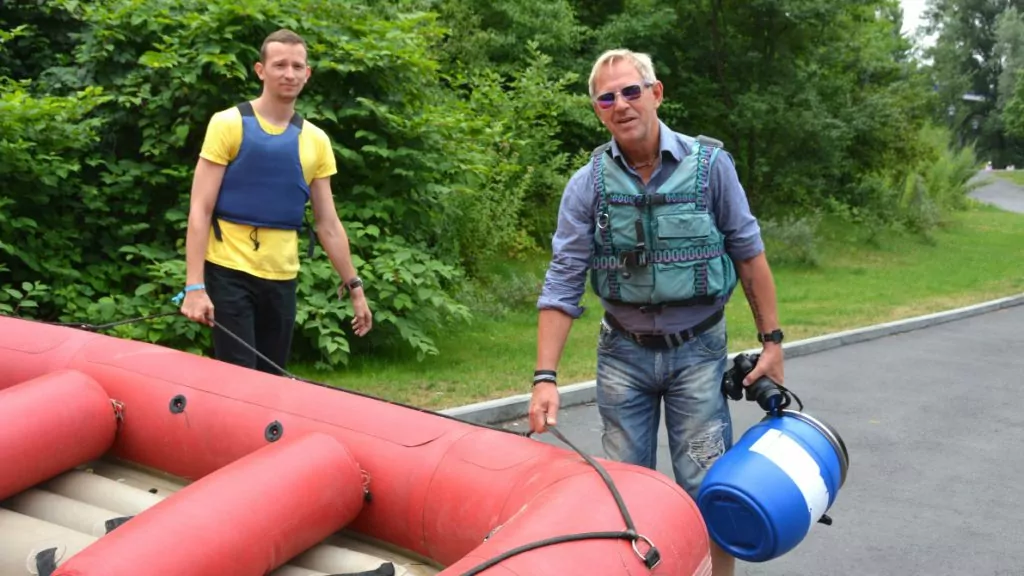
Facts about the Czech Republic
- Statehood: Republic
- Regions: Bohemia, Moravia and Silesia
- Regions: Karlovy Vary, Usti nad Labem, Plzeň, Liberec, Prague, České Budějovice, Hradec Králové, Pardubice, Jihlava, Olomouc, Brno, Ostrava and Zlín.
- Residents: 10.5 million (2017)
- Capital city: Prague
- Next largest city: Brno
- Highest mountainSnezka, 1603 metres
- Longest river: Labe (Elbe)
- Biggest lakeLipno, 48.7 km² km².
- Highest building: Zizkov TV tower in Prague, 216 metres high
- Nobel Prize winners from the Czech RepublicJaroslav Heyrovský won the Nobel Prize for Chemistry in 1959 and Jaroslav Seifert won the Prize for Literature in 1984.
- Biggest sports: Ice hockey and football
- Currency: Czech crown (korunas)
- Time difference: None
- Country number: 420
- National Day: 28 October
- With the EU: 1 May 2004
- NATO members: On 1 March 1999, the Czech Republic joined NATO.
- Language: Czech
- Emergency number: 112
- El: Like Sweden but older earthed sockets can be difficult.
- Water: Drinkable

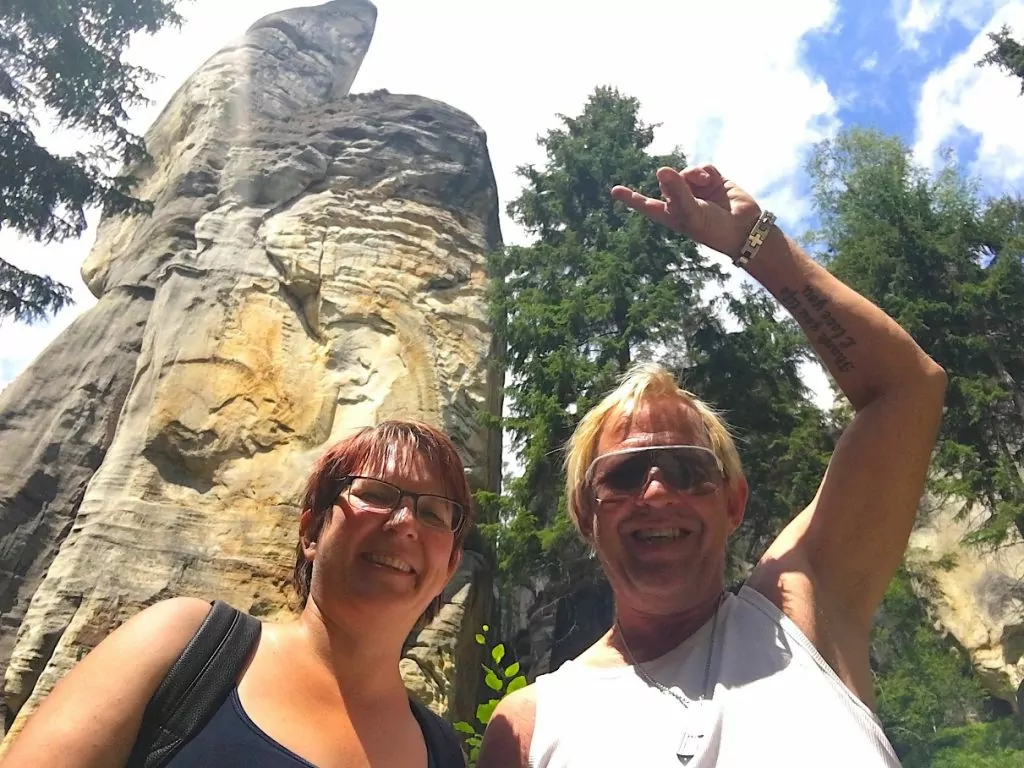
Historical facts about the Czech Republic
300 years BC lived a Celtic tribe called the Boii, and they gave the land its Latin name - Boiohaemum which is Bohemia. The Germanic tribes came and took over the area.
Year 500 AD Slavs settled in the area, and in 863, the Byzantine missionaries Cyril and Methodius came to preach Roman Catholicism.
Before year 900 there was a kingdom called Great Moravia (the eastern part) where Slovaks and Czechs lived. Between 903 and 907, the Magyars (Hungarians) and Slovaks fought, eventually becoming part of the Hungarian Empire.
In the western part of the country were the regions of Bohemia and Silesia that fell under the German-Roman Empire.
Year 935 - the death of St Václav, today the patron saint of Bohemia, Prague and the Czech Republic. In 1085 Vratislav became the first Bohemian prince with a royal title.
From the year 1212 The Přemysl Otakar family ruled for 100 years until 1306.
Year 1310 - 1437 ruled the Luxembourg family for 120 years. During this time (1355), Charles IV became Roman Emperor, they built the first university north of the Alps, the Hussite War for 15 years and finally peace in 1436.
Between 1471 and 1526 was ruled by the Jagellonian family and most of the time by Vladislav Jagellon.
From 1526 and for almost 400 years until 1918, the Habsburg dynasty ruled. During this time, the Czechs wanted religious freedom but lost in 1620 and people who did not want to believe were forced to emigrate.
The 30-year war starts 1618 and Sweden as a major power stayed in the country until the peace of 1648.
1900S
People were getting fed up and two-fifths of the West were now German-speaking. Czechs and Slovaks began to rebel, but the uprisings were suppressed. Later, Austria-Hungary was also involved in Bohemia and Moravia.
During the First World War the struggle finally broke through, and on 28 October 1918, Czechoslovakia's independence was proclaimed in Prague's Wenceslas Square.
14 March 1939 Slovakia declared its independence and the following day Germany entered the country, following the Munich Agreement.
The Germans stayed there throughout World War II until 1944 when the Red Army drove them out of the country. The Germans were gone but the Russians came in.
In 1948 there was the Prague Coup which meant that the Communist Party ruled the country with help from Moscow. In 1968, new reforms were openly discussed but then the country was invaded by the Soviets and repressed.
Year 1989 the communist dictatorship collapsed and the country returned to parliamentary democracy.
Václav Havel was elected president. In 1990 the political situation in Europe changed and free elections were to be held. Czechoslovakia was dissolved in 1992 for not having the same ideas in the country, and that letter was signed in Villa Tugendhat at Černopolní 45 in Brno.
1 January 1993 the republics of the Czech Republic and Slovakia were formed separately.


